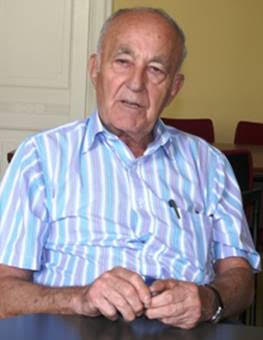
THE VOICE OF INTERNATIONAL LITHUANIA
|
VilNews has its own Google archive! Type a word in the above search box to find any article.
You can also follow us on Facebook. We have two different pages. Click to open and join.
|
Featured black
- Posted by - (2) Comment

- Bookmark :
- Digg
- del.icio.us
- Stumbleupon
- Redit it
- Posted by - (0) Comment
![]()
Lithuanian economy in 2012:
We expect this year
to be turbulent
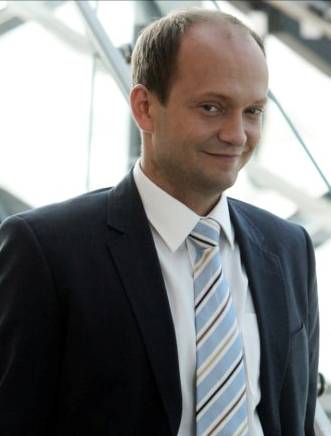
Nerijus Mačiulis, Chief Economist, SWEDBANK.
In the first three quarters of 2011, the Lithuanian economy expanded by 6.4% over the same period a year ago; the expansion was driven mainly by household consumption and investments. During the same period, average quarterly growth was a solid 1.8% but probably decelerated in the last quarter of 2011, when GDP was some 6% higher than a year ago. The economy probably grew by 6.3% in 2011, in line with our forecasts.
We expect this year to be more turbulent, and prospects less sanguine. The recession looming in the euro zone will affect the Lithuanian economy not only directly, via slower growth of exports, but also indirectly, via lower household and business expectations. Although, in our main scenario, the euro zone economy contracts by only 0.3% in 2012, the risk of less orderly developments and increasing tensions is high. We have cut our growth forecast for 2012 to 3.3%, down from 4.2% and to 4.0% in 2013, down from 4.2%.
- Bookmark :
- Digg
- del.icio.us
- Stumbleupon
- Redit it
- Posted by - (1) Comment

Lithuanian economy in 2012:
From swift recovery
to lower growth
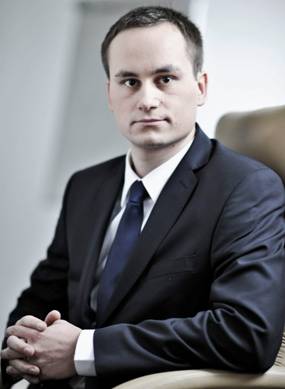
Rokas Bancevičius, Senior analyst, DNB Bank.
This year we celebrate the independence day of Lithuania surrounded by the uncertain economic environment. Lithuania was one of the top growing economies in the EU in 2011 but we are not expecting more of the same in 2012. The key challenges for Lithuania this year will be escalations of debt crisis in the eurozone and the general elections in Lithuania this autumn.
Lithuania’s GDP expanded by an impressive 5.8% last year up from 1.4% in 2010. This result is second best in the EU as Lithuania is surpassed by Estonia only. Lithuanian exports expanded by 16% yoy in real terms in the first nine months of the year. However, the end of 2011 witnessed an economic slowdown as contracting EU economy and uncertainty over sovereign debt crisis started weighting on Lithuanian business. This effect was especially pronounced for exporters.
While 2011 was a successful year for Lithuania, future holds several major challenges. The most prominent is the Europe’s sovereign debt crisis that has already started weighting on the real sectors with EU’s economy contracting in the last quarter of 2011 by 0.3 per cent. This will affect Lithuania’s exports more than half of which goes to EU members. On the positive side, Lithuania mostly exports to countries with relatively good growth prospects - Germany, Poland, Latvia, Estonia and non-EU Russia. According to the survey of Lithuanian Manufacturers, undertaken by Lithuanian Manufacturers Confederation, 53 per cent of industry managers expect stable (neither higher nor lower) amount of export orders in 2012.
Another major concern when looking into 2012 is Lithuania’s refinancing risk. Government has to refinance c. LTL5.7bn (EUR1.65bn) of debt and to borrow additionally c. LTL3bn (EUR0.86bn) to cover budget deficit. Government has already raised c. LTL4bn (EUR1.15bn) by issuing a 10-year USD denominated bond at the yield of 6.75%. This sum is sufficient to meet all obligations in the coming months and to redeem EUR1bn bond maturing this May. Nevertheless, government will still have to tap international markets again later this year. Should market funding become too expensive, government might be forced to turn to IMF for an emergency loan. This could result in additional austerity measures and more output contraction. However, this risk was diminished by recent developments in Greece where politicians passed additional austerity measures.
Lithuania’s internal problems are as prominent as external ones. Labor market remains weak. While number of unemployed people fell by a fifth last year to 222 thsd. level of unemployment remained high at 13.9% at the end of 2011. This weighs on consumer confidence and limits growth of domestic demand. The problem is structural unemployment as companies report the lack of skilled labor force while majority of unemployed are not qualified or have liberal art degrees. This as well as emigration will have severe negative consequences on economic growth and state finances in the long-run. Nevertheless, the short-run economic developments will depend on the solutions of the Eurozone crisis and on the outcome of elections in Lithuania this autumn.
The risk of overspending by politicians in the pre-election cycle did not materialize in Lithuania as Government continued its budget consolidation in 2012. However, the uncertainty of the outcome of the new ruling coalition and the uncertainty whether the new Government continues with the current fiscal conservativism and strategic projects (LNG terminal and Visaginas power plant) makes it very difficult to forecast for 2013.
Overall, 2012 will be the year of slower growth and further stabilization in the economy. We expect Lithuania’s GDP to grow in the region between 2.5 – 3 per cent compared to 5.8 per cent in 2011. If Greece crisis is contained and Europe returns to growth at the second half of 2012 Lithuanian economy will end up growing at the higher rate of this range.
Rokas Bancevičius, Senior analyst
Rokas Bancevičius is an acting head of the DNB Economic Research Unit. He holds MSc in Economic and Social History from Oxford University and BSc in Economics from University of Birmingham.
- Bookmark :
- Digg
- del.icio.us
- Stumbleupon
- Redit it
- Posted by - (0) Comment

Lithuanian economy in 2012:
From swift recovery
to lower growth

Rokas Bancevičius, Senior analyst, DNB Bank.
This year we celebrate the independence day of Lithuania surrounded by the uncertain economic environment. Lithuania was one of the top growing economies in the EU in 2011 but we are not expecting more of the same in 2012. The key challenges for Lithuania this year will be escalations of debt crisis in the eurozone and the general elections in Lithuania this autumn.
Overall, 2012 will be the year of slower growth and further stabilization in the economy. We expect Lithuania’s GDP to grow in the region between 2.5 – 3 per cent compared to 5.8 per cent in 2011. If Greece crisis is contained and Europe returns to growth at the second half of 2012 Lithuanian economy will end up growing at the higher rate of this range.
- Bookmark :
- Digg
- del.icio.us
- Stumbleupon
- Redit it
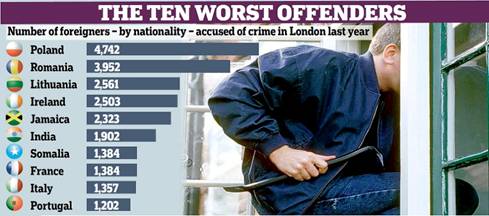
Illustration: http://www.dailymail.co.uk
Eastern European criminals were responsible for more than 11,000 crimes in London last year. Nationals of Poland, Romania and Lithuania were most likely of all foreigners to be prosecuted by the police, an investigation has revealed, according to Mail Online.
Overall, foreigners are accused of one in four of all crimes committed in London.
Astonishingly, they make up nine out of ten drug suspects and are responsible for more than one in three sex offences.
One in four of the East European assailants were Lithuanians, while criminals from Poland
accounted for around 50%. But the percentage in proportion to population shows that Lithuania towers on top with a huge margin. In relation to population there were committed 6.5 times more crimes by Lithuanians than by Poles!
Terrible statistics for a small country that so desperately needs good forces in the recovery and new prosperity after all the years of Soviet oppression.
A report published by Associate Professor Aurelijus Gutauskas at Mykolas Romeris University's Law Faculty gives a very interesting insight into how the economic downturn has led to increased social disparities, crime, fraud and widespread shadow economy in Lithuania, ref https://vilnews.com/?p=6312#idc-container
EU homicide rate per 100 000 population,
average per year, 2007-2009
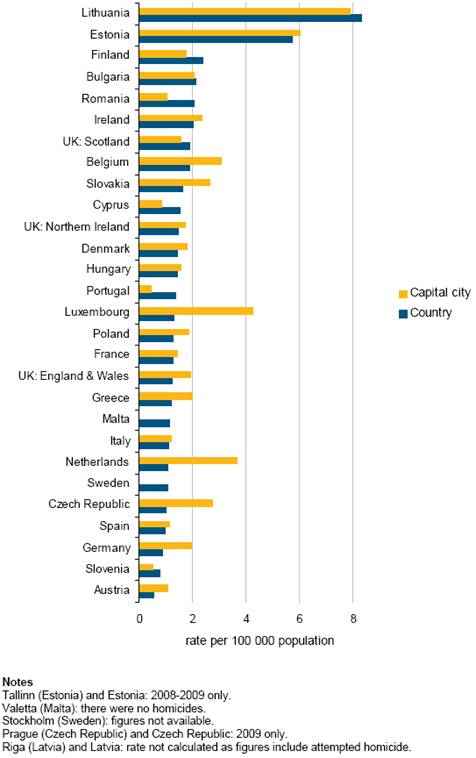
Homicide is a type of violent crime, and is defined as the intentional killing of a person, including murder, manslaughter, euthanasia and infanticide. It excludes death by dangerous driving, abortion and help with suicide. The national figures indicatethat Lithuania and Estonia have by far the highest incidence of homicides (over 8 and 5 victims respectively per 100 000 population).
- Bookmark :
- Digg
- del.icio.us
- Stumbleupon
- Redit it
- Posted by - (0) Comment
Why dignity matters
for Lithuania
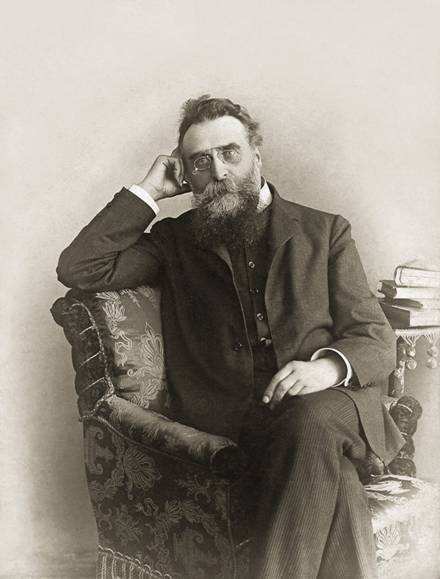
Jonas Basanavičius (23 November 1851 – 16 February 1927) was an activist and proponent of Lithuania's National Revival and founder of the first Lithuanian language newspaper Aušra. He was a signatory of the Act of Independence of Lithuania on 16 February 1918 Basanavičius is often given the unique informal honorific title of the "Patriarch of the Nation" for his contributions and help in re-establishing the Lithuanian state.
By Aage Myhre, Editor-in-Chief
aage.myhre@VilNews.com
“A man's country is not a certain area of land, of
mountains, rivers, and woods, but it is a principle;
and patriotism is loyalty to that principle.”
- George William Curtis
It is 16 February 2012. It is today exactly 94 years since a group of brave men wrote the Lithuanian declaration of independence after the country had been under Tsarist Russia's iron heel through more than 100 years. These men represented a generation that certainly felt an overwhelming sense of pride at the dawn of renewed independence. The Act of February 16 was signed by all 20 representatives of the Council of Lithuania, proclaiming the restoration of an independent State of Lithuania, governed by democratic principles. The meeting and signing procedures were chaired by Jonas Basanavičius, the man often given the unique informal honorific title of the "Patriarch of the Nation" for his contributions and help in re-establishing the Lithuanian state.
What these men presented from the balcony of a house in Pilies street here in Vilnius Old Town was not much more than a piece of paper. But it was a paper that symbolized a nation willing to throw off the yoke. A nation that had won back its self respect and dignity in spite of the injustice and oppression that had been going on since the Russian occupation started in 1795.
We salute these men for their courage and foresight. We salute them because they, in faith, hope and dignity clearly showed that Lithuania wanted to live up to its proud history as a nation of greatness.
Great nations are founded on self-belief!
- Bookmark :
- Digg
- del.icio.us
- Stumbleupon
- Redit it
- Posted by - (2) Comment
Why dignity matters for Lithuania

Jonas
Basanavičius (23 November 1851 – 16 February 1927) was an activist and
proponent of Lithuania's National Revival and founder of the first Lithuanian
language newspaper Aušra. He was a signatory of the Act of Independence of
Lithuania on 16 February 1918 Basanavičius is often given the unique informal
honorific title of the "Patriarch of the Nation" for his
contributions and help in re-establishing the Lithuanian state.
By Aage Myhre, Editor-in-Chief
aage.myhre@VilNews.com
“A
man's country is not a certain area of land, of
mountains, rivers, and woods,
but it is a principle; and
patriotism is loyalty to that principle.”
- George William Curtis
It is 16 February 2012. It is today exactly 94 years since a group of brave men wrote the Lithuanian declaration of independence after the country had been under Tsarist Russia's iron heel through more than 100 years. These men represented a generation that certainly felt an overwhelming sense of pride at the dawn of renewed independence. The Act of February 16 was signed by all 20 representatives of the Council of Lithuania, proclaiming the restoration of an independent State of Lithuania, governed by democratic principles. The meeting and signing procedures were chaired by Jonas Basanavičius, the man often given the unique informal honorific title of the "Patriarch of the Nation" for his contributions and help in re-establishing the Lithuanian state.
What these men presented from the balcony of a house in Pilies street here in Vilnius Old Town was not much more than a piece of paper. But it was a paper that symbolized a nation willing to throw off the yoke. A nation that had won back its self respect and dignity in spite of the injustice and oppression that had been going on since the Russian occupation started in 1795.
We salute these men for their courage and foresight. We salute them because they, in faith, hope and dignity clearly showed that Lithuania wanted to live up to its proud history as a nation of greatness.
Great nations are founded on self-belief!
As we now know, the newfound freedom was not going to last much more than 20 years. But they were 20 important years in which Lithuanians showed the world and themselves that the citizens and the country's leaders had the ability to collaborate an utterly successful reconstruction of the nation. Pride, dignity and courage came to characterize the inter-war years of this country.
The years 1988-1991 were also characterized by dignity and confidence. The quiet revolution that defined the Lithuanian and the other Baltic States' revolt against Soviet rule was almost like a textbook on how a nation's inner strength can lead to freedom originating from within, from its own citizens.
The 21 years that have passed since 1991, have not in the same good way as the 21 inter-war years demonstrated a nation where citizens have regained pride and commitment to joint efforts for the home country. Distrust, corruption and greed has unfortunately become all too characteristic of the last two decades. Hundreds of thousands have left
Lithuania during these years, frustrated by the absence of expected progress, of seeing that cheating on many levels is still going on, and that a small minority have made themselves rich at public expense.
It is in this situation easy to blame the nation's leaders. And for good reason. But the country's own citizens, especially the young, should be united in a common effort and take responsibility for a better future. Politicians and leaders should show the way, but the exertion must come from within, from the people.
"Ask
not what your country can do for you –
ask what you can do for your country."
-
John F. Kennedy's Inaugural Address, January 20, 1961
VilNews wants to contribute to the cause of supporting the Lithuanian people, wherever in the world they are located, to once again feel pride and enjoyment of their homeland. We would like to see many of those who have emigrated and their descendants to return home again. We want to see a joint effort for the home country among Lithuanians all over the world. We want the team feeling back.
Patriotism, pride and dignity are important elements in order for such efforts to succeed. We have, with this as background, invited a group of prominent individuals who represent dignity and patriotism in an outstanding manner. They are all born in Lithuania before World War II, a period when Lithuania flourished. Some of them have lived most of their lives in this country while others fled to western countries when Stalin's war machinery rolled into their homeland.
Common to them all, however, is that they continuously have fought for the fatherland, wherever in the world they have been living or working.
On this very special day for Lithuania, the 16th of February, it's a great pleasure to honour and thank these individuals for their tremendous efforts and attitudes to the homeland. They have something to teach us. They have, through the way they have lived their lives, and their wisdom, something important to share with all of us who are related to Lithuania.
They represent the sort of dignity and patriotism that we all should let us inspire by and follow.
|
Statement from the VilNews Honorary Council
We, the undersigned have accepted the honour of becoming members of VilNews e-magazine’s Honorary Council because we fully support VilNews as a free, independent, serious, and honest publication with the noble goals of connecting people around the globe with ties to Lithuania by giving them a forum and voice so they can actively participate and dialogue with the homeland and each other. Our beloved Lithuania is undergoing difficult times. We wish to foster a greater appreciation of what our proud and honourable nation and our people, both at home and abroad, truly represent. We, the members of the Honorary Council, wish to contribute, embody, and set standards that enhance the progress and development of Lithuania as a great nation based on dignity, wisdom, tolerance, multiculturalism, and respect for each other. We invite everyone with ties to Lithuania to participate and get actively involved in support of these noble goals, both through dialogue and mutual cooperation. We are proud to state that Lithuania today is a free and independent nation with norms, values, and visions that are deeply rooted in our country’s long and proud history, and it is these outstanding qualities that define our country and our people as the nation called Lithuania. These are the traits that have made Lithuania a great, progressive, and prosperous force in human history. Now our nation needs to pull together so that we can confront boldly the challenges we face and take responsibility for our own future again. Our participation in the Honorary Council does not imply that we, either as a group or as individuals, necessarily agree with all of the opinions the publication’s editorial staff, readers, and other parties may express in articles, comments, or other published content, but we do affirm and advocate freedom of the press, speech, and other forms of legitimate expression as among the inviolable rights of a democratic Lithuania, based on the ethical standards outlined in the publication’s own “Code of Ethics” (ref VilNews Section 3). We encourage Lithuanians and readers around the world to express their opinions and views through VilNews with the common goal of contributing to a better and more prosperous future for the worldwide Lithuanian community and the nation called “Lithuania!” Irena
Veisaite – Valdas Adamkus – Jonas Kronkaitis – Stasys Backaitis
|
Why is dignity important for Lithuania?
For me dignity has to do with the feeling of self-worth. Something every person and nation needs to have to succeed and feel good. Still my experience is that in spite of its universal appeal, this remains a topic rarely discussed. We all have experience of it but may not have words to describe it or a wish to talk about it.
We all know how great it is to be seen, heard, and acknowledged for who we are and treated as if we mattered. Who doesn't enjoy the praise of being recognized for doing a good job or being honoured for going beyond the call of duty?
We also know what it feels like to be treated as inferior, discriminated against, ignored, misunderstood, criticized and excluded. There is little worse than being in a situation where you are treated unfairly and can do nothing about it, or being excluded from something that means a lot to you.
We are all too well aware of the feelings that accompany these violations of our dignity. What is not so common is to bring them up for discussion. It is often too embarrassing to admit that we have been treated so badly. It is why attention on matters of dignity and to give us a language to bring these issues to the surface so that we can legitimize the suffering that accompanies these painful human experiences and do something about them.
We don't have to just live with them, we need to address them. So does the nation called Lithuania.
Matters of dignity are at the heart of every interaction we have with other people or nations. They show up in the work, in schools, at home, in intimate relationships – everywhere human beings come into contact with one another. All over the world dignity violations abound. In work or social relations people often feel that they are not treated well, but have no way to "speak-up" for fear of retribution. Many feel it would be career suicide to go to their bosses and tell them that they have violated their dignity. The end result is that there is a lot of resentment on the part of employees and little desire to extend themselves beyond what their job requires. It is infuriating to them that they are being mistreated and that there is no way to give voice to it. Conflicts over dignity are an everyday experience but very few people feel skilled in handling them.
This is why I think matters of dignity are of highest importance both for and within Lithuania. The time has come to shed light on something that we may not have either the courage or language to discuss. The shame that accompanies being treated badly prevents us from doing the very thing we need to do to recover from violations of our dignity: bring them out into the open, validate them, and give them the attention they deserve.
We wouldn't think twice about getting help when we have a physical injury. When we have a wound to our dignity there is nowhere to go; no emergency call or room. Bringing the issue to light can help us all heal from the many subtle and not so subtle ways that indignity has found its way into our lives.
We, Lithuania, can do better and we should do it with dignity.
“Dignity does not float down from heaven it cannot be
purchased nor manufactured. It is a reward reserved for those who labour with
diligence.”
- Bill Hybels
- Bookmark :
- Digg
- del.icio.us
- Stumbleupon
- Redit it
- Posted by - (0) Comment
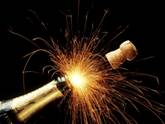 |
 ONE YEAR ONLINE! |
VilNews Honorary Council!
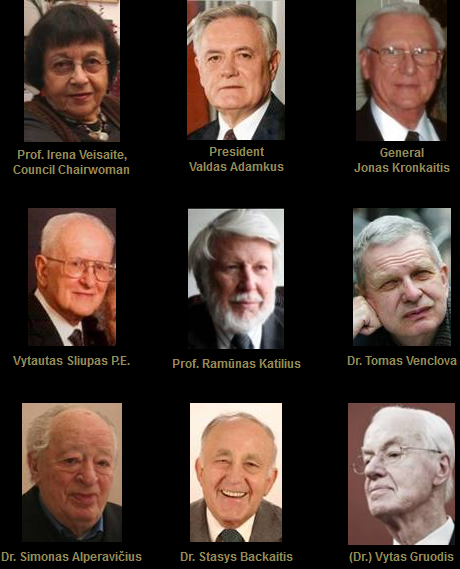
By: Aage Myhre, Editor-in-Chief
aage.myhre@VilNews.com
Dear VilNews readers,
We are today proud to present you to our ‘Honorary Council’ – composed of distinguished individuals, all born in Lithuania before World War II, all having extraordinary lives and careers – some in Lithuania, some in exile due to the Soviet occupation of their motherland.
The members of the Honorary Council, wish to contribute, embody, and set standards that enhance the progress and development of Lithuania as a great nation based on dignity, wisdom, tolerance, multiculturalism, and respect for each other.
Lithuania is today a free and independent nation with norms, values, and visions that are deeply rooted in our country’s long and proud history, and it is these outstanding qualities that define the country and our people as the nation called Lithuania. These are the traits that have made Lithuania a great, progressive, and prosperous force in human history.
Now our nation needs to pull together so that we can confront boldly the challenges we face and take responsibility for our own future again.
The dignitaries participation in the Honorary Council does not imply that they, either as a group or as individuals, necessarily agree with all of the opinions the publication’s editorial staff, readers, and other parties may express in articles, comments, or other published content, but they do affirm and advocate freedom of the press, speech, and other forms of legitimate expression as among the inviolable rights of a democratic Lithuania, based on the ethical standards outlined in the publication’s own “Code of Ethics” (ref VilNews Section 3).
They encourage Lithuanians and readers around the world to express their opinions and views through VilNews with the common goal of contributing to a better and more prosperous future for the worldwide Lithuanian community and the nation called “Lithuania!”
Irena Veisaite – Valdas Adamkus – Jonas Kronkaitis – Stasys Backaitis
Vytautas Slliupas – Tomas Venclova – Romas Katilius – Siminoas Alperavicius – Vytas Gruodis
TO READ MORE, GO TO OUR SECTION 2
* * *
VilNews became an online e-publication
15th of February 2011
* * *
Today: 250.000 readers in 175 countries
in absolutely all world corners!
* * *
If VilNews was printed on paper, it would become
a book of more than 6.000 pages
* * *

Coronation of King Mindaugas, Lithuania’s first and only king, 6 July 1253.
“The Coronation of King Mindaugas” is the only historical picture out of half a
thousand works that were painted by Adomas Varnas (1879-1979). Varnas was
Lithuanian, a graduate of the Krakow Academy of Fine Arts and the Geneva
High School of Painting, and lived abroad most of his life. He worked on
the painting of King Mindaugas in Chicago, USA. The size of the picture is
1,65 m x 1,3 m. It portrays the climactic scene of the King’s coronation.
Varnas painted the canvas when he was over 70 years of age, in 1952.
He consulted several scientists to avoid historical mistakes.
VilNews went online 15 February 2011. Our goal was to get 100,000 visitors in one year. This target was reached already after six months, and now, after one year, we are very pleased to announce that we have reached 250,000 visitors – one quart million readers in no less than 175 countries! Around 1,000 persons are now reading VilNews every single day, a new reader every 1,5 minute in other words…
Experts told us in advance that a ‘niche product’ like this could expect a readership of 10,000 – 15,000 per year. Skeptics said that we were too optimistic. They were thoroughly wrong …
VilNews is a unique combination of blogs, news, historical articles, etc – a news media and social media under same umbrella, including a huge information base providing background articles on history, politics, economy and much more.
As far as we know VilNews is now the world’s most comprehensive online presentation of Lithuania and Lithuanian topics, be it with regard to history, politics, economy, culture, tourism and more. Had VilNews been printed on paper it would be a book of more than 6,000 pages, thicker than the Bible, Old and New Testament together.
To make reading easier, we have divided VilNews into 24 specialty sections. Below we have described them all. To get to the sections you can now today simply press the LEARN MORE buttons to the right, but normally you have to use the buttons on top of the front page of VilNews.
Note also the search box at the top of the front page. Enter any keyword and click SEARCH to find articles from our very extensive archive.
- Bookmark :
- Digg
- del.icio.us
- Stumbleupon
- Redit it
- Posted by - (0) Comment
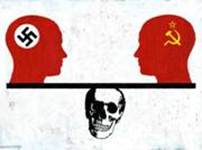 “DOUBLE GENOCIDE” |
The "Double Genocide theory" is a concept about the equality of the Holocaust and Communist crimes against humanity. The term was used by associate professor of political science Dovilé Budryté in 2004 in a study of Lithuanian memory politics with regard to Soviet and Nazi repression, where the view held by a segment of that country since before the restoration of independence in 1991 was that Lithuanians similarly suffered genocide under Soviet rule. Recent critics of this Lithuanian viewpoint, Dovid Katz and Efraim Zuroff, have argued that the country has presented a false “double genocide” thesis and its argumentation obfuscates the Holocaust.
------------------------------------------------------------------------------------------------------------------------------------------------------------------------
 Roger Cohen |
 |
‘The Suffering Olympics’
By ROGER COHEN
Published: January 30, 2012
VILNIUS, LITHUANIA — The “double genocide” wars that pit Stalin’s crimes against Hitler’s are raging in wide swathes of Europe and every now and again along comes a gust from the past to stoke them. The 70th anniversary this month of the Nazi adoption at Wannsee of annihilation plans for the Jews provided one such squall.
Yes, the past is still treacherous beneath Europe’s calm surface. Memory swirls untamed in the parts of the Continent that the American historian Timothy Snyder calls “Bloodlands,” the slaughterhouses from Lithuania to Ukraine that Hitler and Stalin subjected to their murderous whim.
To mark the Wannsee anniversary, over 70 European Parliament members, including 8 Lithuanians, signed a declaration objecting to “attempts to obfuscate the Holocaust by diminishing its uniqueness and deeming it to be equal, similar or equivalent to Communism.” It also rejected efforts to rewrite European school history books “to reflect the notion of ‘double genocide.”’
All of this was too much for the Lithuanian foreign minister, Audronius Azubalis, a conservative, who blasted the Lithuanian social democrat signatories as “pathetic.” His spokeswoman declared that the only difference between Hitler and Stalin was the length of their mustaches. She said legal qualifications of the crimes they committed were “absolutely the same”: genocide, war crimes and crimes against humanity.
------------------------------------------------------------------------------------------------------------------------------------------------------------------------
Three major flaws mar
Mr. Cohen’s attempt

Boris Bakunas
By: Dr. Boris Vytautas Bakunas, Ph.D.
"Mr. Cohen may appear to make a sincere effort to present a balanced view in his article; however, three major flaws mar his attempt. First, the article is based on the logical fallacy of false dichotomy, also known as the either-or fallacy. Second, the scales of balance in Mr. Cohen’s presentation waver as a result of his failure to present all the relevant facts related to the establishment of The Museum of Genocide Victims in Vilnius. Finally, Mr. Cohen obfuscates two crucial terms: Holocaust and genocide.
------------------------------------------------------------------------------------------------------------------------------------------------------------------------
- Bookmark :
- Digg
- del.icio.us
- Stumbleupon
- Redit it
- Posted by - (0) Comment
Lithuania is now a preferred
gateway to the EU for:
Japan – China – India
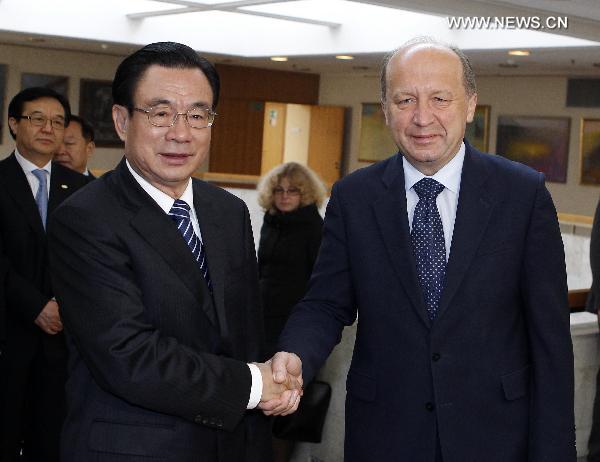
Lithuania is "China's important trading partner in the Baltic Sea region," He Guoqiang, member of the Standing Committee of the Political Bureau of the CPC Central Committee and secretary of the CPC's Central Commission for Discipline Inspection, said during this meeting with Lithuanian Prime Minister Andrius Kubilius.
The Lithuanian government has made several wise moves during the past year. One has connected ever-stronger ties to Scandinavia and Finland, another one is that there has been an increasing number of contacts made to Asian countries, especially with regards to China, India and Japan.
The agreements that are negotiated, or are under development, are highly significant and may give Lithuania a key position as a link between Asia and EU.
The agreements represent all win-win situations for bilateral relations between the three countries and Lithuania, since both sides have much to gain from the sort of bilateral cooperation that have been negotiated.
For Lithuania, these agreements are so important, economically, politically and with regard to growth in research, technology and communications, that they are likely to be perceived as a political boost for the incumbent government. The deals are simply so promising that they can get PM Kubilius re-elected in the parliamentary election this fall.
Among the news in the cooperation between the countries are worth mentioning:
- JAPAN: Cooperation for the construction of a new nuclear power plant in Visagino, and related technology transfer.
- CHINA: New rail connection from China to Klaipeda and on to Antwerp in Belgium, plus a brand new IT innovation centre at the University of Vilnius.
- INDIA: Lithuania as India's textile industry's gateway to the EU.
Aage Myhre
aage.myhre@VilNews.com
A handful interesting inks with regards to Lithuanian bilateral cooperation with:
- Bookmark :
- Digg
- del.icio.us
- Stumbleupon
- Redit it
Lithuania in a world perspective
- Posted by - (0) Comment
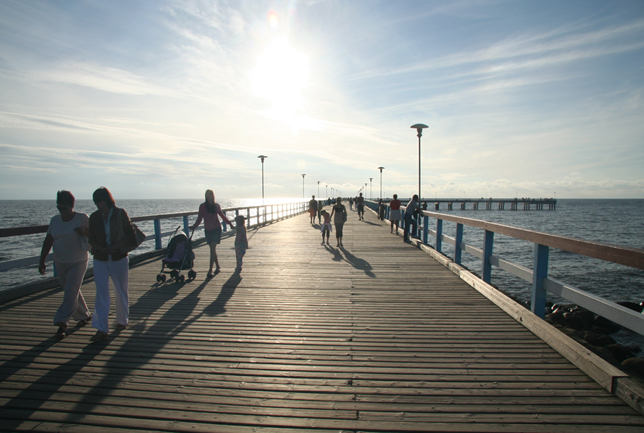
Text: Aage Myhre
A reader who responded to one of our VilNews issues last year argued that our publication had begun to go in the footsteps of local Lithuanian media in describing Lithuania in a rather negative way. I can well understand such a reaction, but it must also be said that unfortunately there has been a relatively large number of cases and circumstances in this country that deserve to be described in quite critical terms.
The bad
• The Lithuanian people, especially the weakest groups, are very hard hit by the economic crisis that continues to affect much of the world. The country's pensioners and other disadvantaged groups continue to live under very miserable conditions, and one must be allowed to make critical remarks on how this country's authorities have acted in the handling of the crisis. It seems to me that Lithuania's government has been more concerned with finding their own solutions, trying to ‘reinvent the wheel' rather than to learn from what other nations have made with regard to stimulus packages, lowered interest rates, etc. in these times of crisis, which in my view unnecessarily sets Lithuania several years back in time compared to many other countries. Fortunately, it appears that the immediate panic that came to characterize both the government and the banks in 2008-2010, was slowly taken over by more mature attitudes in 2011.
• There has still been far too little done for increased foreign investments in Lithuania, even if there were some good efforts made during 2010 and 2011. Also the country's own industry has largely had to fend for themselves without the kind of facilitation and support one sees taking place in countries frequently compared with Lithuania.
• The country has been constantly ill-placed on Transparency International's statistics on corruption and transparency over many years, compared with other European countries, a situation which clearly has hindered economic growth and a better society for its own citizens. That corruption and bribery is still a part of the country's 'culture' in business and public institutions is nothing less than a big shame!
• The country's press must, unfortunately, largely be described as underdeveloped, with too much emphasis on celebrity and scandal reviews, and too little emphasis on constructive and investigative journalism that focuses on corruption and other undesirable conditions that continue to hold this country down. But many would also say that the media focus too much on the negative, too little on all the positive things going on here.
• A huge proportion of Lithuania's population has emigrated in recent years, including many of those with higher education, and one can rightly ask what is done to create new jobs and make necessary provisions to keep these groups remain in their home country.
• One of Lithuania's most prominent human resources is undoubtedly the country's large diasporas around the globe, groups of people and their descendants who left their mother country because of war, difficult economic conditions, political persecution, etc. These diaspora groups are in my view too little listened to or consulted from the Lithuanian authorities, which is very sad for a nation that so desperately needs all possible support and assistance from the hundreds of thousands who still have Lithuania in their hearts.
• When Lithuania's Constitutional Court in November 2006 ruled that the country's Law on Citizenship should be interpreted in disfavour of dual citizenship for large groups of Lithuanians and their descendants having citizenships in other countries, this became the start of a still heated debate around the world, as many within the country's numerous diaspora groups felt that their country of origin did not want them back or did not want to appreciate them as full Lithuanians. Many felt that the Court's decision in its interpretation of the law was more influenced by hidden motives and intentions rather than common sense. As previously stated, Lithuania desperately needs goodwill from all of its huge diasporas, and should be more eager than most other countries to allow dual citizenship. Lithuania’s welcome-back-door must be kept constantly open, never closed. We need everyone who is ready to contribute and make an effort for the mother country.
• The Lithuanian school system, especially at higher levels, is still dominated by Soviet-era thinking and there is good reason to ask what has been done the last 22 years to make it more conducive to more advanced and modern education, research and collaboration between education, businesses and government.
• Health Service has major and serious deficiencies, and also suffers under the fact that many of the nation's doctors and nurses have emigrated to Western countries.
• The focus on travel and tourism has largely been unsuccessful, partly because of the disproportionately high airport taxes (the good news is that this was finally understood and these taxes were drastically lowered some time ago), under-developed ports for ferries and other ships in the Baltic Sea city of Klaipeda, poorly developed infrastructure and promotional activities, as well as little support to hotels and other tourist industries.
• Vilnius as European Capital of Culture in 2009, must also be described as a flop due to the fact that the number of visitors to the city was sharply down instead of up as expected, not least because of the unstructured and poor planning, and as several flights were cancelled due to FlyLAL's bankruptcy, too high airport charges and poor decisions by authorities. The planned main symbol of the year of culture, the re-created royal palace at the cathedral in Vilnius that should have been completed in all its glory during the culture year, still stands there as a ghostlike skeleton surrounded by construction cranes.
• The statistics for suicide and violent crime in Lithuania is sad reading, and the country is among those on the very bottom of all these statistics compared to the rest of Europe.
• Lithuanians make up for a disproportionate share of criminal gangs in Western Europe and the United States, something which increasingly creates major problems for the police and the judiciary in many countries and also leads to frequent negative headlines about Lithuania in the Western media.
• Lithuania is still suffering under a lot of pending historic "dirt", for example with regard to its dealings with the Holocaust and the fact that relatively many Lithuanians collaborated with the Nazis in the extermination of the Jews here. There was also an extensive collaboration between the KGB and senior Lithuanian politicians through the Soviet time, and it is still missing a wide clarification of what actually took place in the post-war partisan war. Reconciliation must be the obvious target, but based on all the facts laid on the table in a most scientific, objective way so that whatever might have been of injustice or illegal actions come to light and can be reacted to. A firm and fair treatment of these historical conditions will provide Lithuania great honour both domestically and from the international community.
• Participation in voluntary organizations is record low in Lithuania compared to other EU countries, and it seems that people in this country has relatively little liking for and willingness to teamwork and to work jointly with others within their neighbourhoods, local communities or on a national level. Is it perhaps selfishness, greed and mistrust of other people behind this?
The good
But, then, there is so very much positive that can be said about this country that many of us have become so fond of during the years after the liberation from the Soviet Union in 1990/91.
Lithuania has in many areas undergone an admirable growth for several years until the economical crisis started, which I recently saw very nicely symbolized by the many great new buildings that have shot up in the outskirts of Vilnius since I first came the same road into town in November 1990 on tour from my native Norway. Vilnius was by then a city that I experienced as sad, dark and worn, but is now a modern metropolis on a European level. An important part of this picture is the incredibly beautiful Old Town in Vilnius, which has now been renovated and re-emerged as one of Europe's finest and most attractive tourist magnets.
Also, coastal areas have undergone phenomenal change for the better. A summer stroll through the newly renovated Palanga city or at Europe's largest sand dunes in Nida are good experiences fully on par with what one finds in other countries' tourism destinations. The spa-town Druskininkai in South Lithuania has similarly undergone great improvements, and stands today as one of Europe's most attractive for anyone who wants to 'recharge the batteries' and at the same time enjoy the truly wonderful sceneries of Lithuania’s forest and lake landscapes.
It pleases me very much every time I visit my in-laws lush garden outside Vilnius. The practice of garden-towns is still alive and well here, and represents, in my opinion some of the closest you can get to this country's soul. Worth a visit!
Let me also mention the fantastic cultural life that so much characterizes this country. Music festivals that mark the cities and towns every summer. Most professional theatre, ballet and singing performances that fill the country's many stages throughout the winter months. Art exhibitions of all kinds, and spontaneous performances of various theatre and music groups in courtyards, squares, settlements and villages across the country. One needs never get bored in Lithuania!
And, let me share with you what two late statistics say about Lithuania:
According to the “2010 Quality of Life Index” published by the “International Living” magazine http://www1.internationalliving.com/qofl2010/, Lithuania is among the 25 best countries in the world to live in, with better quality of life than most other countries of Central and Eastern Europe (even ahead of some West-European countries).
Vilnius can boast of the cleanest air in Europe according to the „Economist Intelligence Unit“ and „Siemens“ in a research study called “An Index of Green European Cities” in which 30 cities-capitals of Europe were participating. http://www.vilnius-tourism.lt/topic.php?tid=84&aid=2304
Conclusion
It is my hope that Lithuania's authorities, businesses and people in general seriously start to cope with the still remaining problems and negative conditions, so that we can put behind us the negative features and once again see and experience a Lithuania with similar positive guts, profile and multi-cultural constellations that this country was once so famous for.
The initial question was what we can do to improve Lithuania's reputation to the rest of our world.
Many would probably say that what we need is more positive attention in international media. And, in fact, over the years there have been spent large sums on advertising Lithuania and Vilnius on CNN and in other media. It has been printed countless brochures, and it has repeatedly been created commissions that should propose new logos, new slogans, new profiles and new ideas for international promotion of Lithuania. But I hardly exaggerate when I say that the usefulness of all this has been extremely limited.
My answer to the question would therefore rather be to open up for a broad process with the aim to overcome, and actively improve the problem areas I have outlined in my bullet points above. I believe this would be a far better starting point and professional platform for improving Lithuania's reputation. Such a process would in itself attract attention and recognition in international media, as well as among leaders and ordinary people around the world.
Nothing gives better reputation for a nation than when the country’s authorities and citizens join forces into a positive and determined development process based on openness, fairness, honesty, genuine concern for fellow human beings, true respect for law and order, hard work, and attempted professionalism on all levels.
Lithuania has the historical and contemporary power to again become a leading, prominent example nation for other developing countries and many others around the world. Let’s take the opportunity.
PS:
I am fully aware that I have embarked into a minefield by writing the above comments, but after living in Lithuania more or less continuously for more than 20 years, I feel that I have some background to indicate an ever-so-small number of perceptions. Giving advice to others, however, is always a risk sport. To be a bit critical is even more risky. I have no roots in or from Lithuania, but I have my 'branches' here, and I would so dearly like my descendants and all other Lithuanians again to feel pride when they tell of their Lithuanian background. Therefore, I have written this, and I hope it will be well received as a constructive contribution with the best intentions and wishes for a brightest possible future in and for Lithuania.
- Bookmark :
- Digg
- del.icio.us
- Stumbleupon
- Redit it
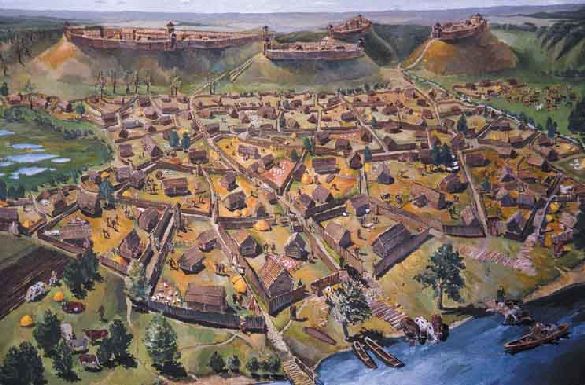
PICTURE: The castles and the town of Kernave (R. Sidrys). Kernavė is a unique 5 mounds complex, honoured as being the first capital of Lithuania. The first settlers appeared here as early as in 9th-8th millennium BC, in the Epipaleolithic period. Since then until the very Early Middle Ages, the territory was continuously settled by people who left their traces. In written sources Kernavė was first mentioned in 1279 in the Livonian Chronicle and the Herman Vartberg Chronicle, where it was described as Traidenis’, the Great Duke’s of Lithuania, estate (1269-1282). At that time Kernavė was the most significant economic-political centre of Lithuania. In 1390 Kernavė was burnt in an attack by Crusaders. After the fire the wooden town and castles have never been rebuilt.
The first people settled in the territory of Lithuania after the last glacial period in the 10th millennium BC. Over a millennium, the Proto-Indo-Europeans, who arrived in the 3rd – 2nd millennium BC, mixed with the local population and formed various Baltic tribes. The first written mention of Lithuania is found in a medieval German manuscript, the Annals of Quedlinburg, on 14 February 1009.
Initially inhabited by fragmented Baltic tribes, in the 1230s the Lithuanian lands were united by Mindaugas, who was crowned as King of Lithuania on 6 July 1253. After his assassination in 1263, pagan Lithuania was a target of the Christian crusades of the Teutonic Knights and the Livonian Order. Despite the devastating century-long struggle with the Orders, the Grand Duchy of Lithuania expanded rapidly overtaking former Slavic principalities of Kievan Rus’.
By the end of the 14th century, Lithuania was the largest country in Europe and included present-day Belarus, Ukraine, and parts of Poland and Russia. The geopolitical situation between the west and the east determined the multi-cultural and multi-confessional character of the Grand Duchy of Lithuania. The Lithuanian ruling elite practiced religious tolerance and borrowed Slavic state traditions, such as using the Chancery Slavonic language for official documents.
In 1385, the Grand Duke Jogaila accepted Poland's offer to become its king. He converted Lithuania to Christianity and established a personal union between Poland and Lithuania. After two civil wars Vytautas the Great became the Grand Duke of Lithuania in 1392. During his reign Lithuania reached the peak of its territorial expansion, centralization of the state was begun, and the Lithuanian nobility became increasingly prominent in state politics. Thanks to close cooperation, the armies of Poland and Lithuania achieved a great victory over the Teutonic Knights in 1410 at the Battle of Grunwald, one of the largest battles of medieval Europe.
After the deaths of Jogaila and Vytautas, the Lithuanian nobility attempted to break the union between Poland and Lithuania, independently selecting Grand Dukes from the Jagiellon dynasty. However, Lithuania was forced to seek a closer alliance with Poland when, at the end of the 15th century, the growing power of the Grand Duchy of Moscow threatened Lithuania's Russian principalities and sparked the Muscovite–Lithuanian Wars and the Livonian War.
The Polish–Lithuanian Commonwealth was created in 1569. As a member of the Commonwealth, Lithuania retained its institutions, including a separate army, currency, and statutory laws. However, eventually Polonization affected all aspects of Lithuanian life: politics, language, culture, even national identity. From the mid-16th to the mid-17th centuries culture, arts, and education flourished, fueled by the Renaissance and the Protestant Reformation. From 1573, Kings of Poland and Grand Dukes of Lithuania were elected by the nobility, who were granted ever increasing Golden Liberties. These liberties, especially the liberum veto (Latin for "I freely forbid"), led to anarchy and the eventual dissolution of the state.
During the Northern Wars (1655–1661), the Lithuanian territory and economy were devastated by the Swedish army. Before it could fully recover, Lithuania was again ravaged during the Great Northern War (1700–1721). The war, plague, and famine resulted in the loss of approximately 40% of the country's inhabitants. Foreign powers, especially Russia, became dominant players in the domestic politics of the Commonwealth. Numerous factions among the nobility used the Golden Liberties to prevent any reforms. Eventually, the Commonwealth was partitioned in 1772, 1792, and 1795 by the Russian Empire, Prussia, and Habsburg Austria.
The largest area of Lithuanian territory came under the control of Russia. After unsuccessful uprisings in 1831 and 1863, the Tsarist authorities implemented a number of Russification policies, including a ban on the Lithuanian press and the closing of cultural and educational institutions, and Lithuania became part of a new administrative region called Northwestern Krai. After the Russian – Turkey war in 1877–1878, when intervention of the German diplomacy withdrew from Russia fair winnings for the benefit of Turkey, the relationship between Russia and the German Empire became complicated. The Russian Empire resumed the construction of fortresses at its western borders for defenses against a potential invasion from Germany in the West. On 7 July 1879 the Russian Emperor Alexander II approved of a proposal from the Russian military leadership to build the largest 65 km2 (25 sq mi) "first-class" defensive structure in the entire state – Kaunas Fortress. Between 1868 and 1914, approximately 635,000 people, almost 20% of the population, left Lithuania. Large numbers of Lithuanians went to the United States first in 1867–1868 after a famine in Lithuania. Nevertheless, a Lithuanian National Revival laid the foundations of the modern Lithuanian nation and independent Lithuania.
LITHUANIA in the 20th century

The original 20 members of the Council of Lithuania after signing the Act of Independent Lithuania, 16 February 1918.
During World War I, the Council of Lithuania (Lietuvos Taryba) declared the independence of Lithuania on 16 February 1918, and the re-establishment of the Lithuanian State. During 1918-20 Lithuania successfully fought a war with newly independent Poland to defend its independence. At the end of 1920, however, Poland annexed Lithuania's capital city and province of Vilnius, which it held until World War II. For 19 years Kaunas became the temporary capital of Lithuania. Lithuania refused to have diplomatic relations with Poland until 1938 on the grounds that Poland illegally held the Vilnius region. After declaring independence, Lithuania also fought against the Bermondt-Avalov army, a German-sponsored group of military adventurers that sought to preserve German influence in the Baltic region, and against Russia. In November 1918, the Red Army invaded the country but ultimately was repulsed by the forces of the young Lithuanian government. On July 9, 1920, Soviet leader Vladimir I. Lenin signed a peace treaty with Lithuania, "forever" denouncing Russia's claims to the territory and recognizing the Lithuanian state.
From 1920 to 1940, independent Lithuania made great strides in nation building and development. A progressive land reform program was introduced in 1922, a cooperative movement was organized, and a strong currency and conservative fiscal management were maintained. Schools and universities were established (there had been no institutions of higher education and very few secondary schools under Russian rule), and illiteracy was substantially reduced. Artists and writers of the period produced works that have become classics.
In the early 1920s, Lithuania had a border dispute with Germany. The city and region of Klaipeda (Memel in German) had been under German rule for 700 years. Originally inhabited by Lithuanians, it was detached from Germany in 1919 by the Treaty of Versailles and placed under French administration. In 1923 Lithuanians organized an insurrection and took over the Klaipeda region. This region was ceded back to Germany after a German ultimatum in March 1939 stated that Germany would invade and take the region back by force if their demands were not met.
On August 23, 1939, Joseph V. Stalin and Adolf Hitler concluded the notorious Nazi-Soviet Nonaggression Pact (also known as the Molotov-Ribbentrop Pact). The agreement had a secret protocol that divided Poland, much of Central Europe, and the Baltic states between Germany and the Soviet Union. Lithuania, at first assigned to the German sphere of influence, in September was transferred to the Soviet Union. In October 1939, the Soviet Union forced on Lithuania a nonaggression pact that allowed Moscow to garrison 20,000 troops in the country. In return, the city of Vilnius, now occupied by Soviet troops, was granted to Lithuania. On June 15, 1940, Lithuania was overrun by the Red Army. At first a procommunist, so-called people's government was installed, and elections to a new parliament were organized. The elections were noncompetitive; a single approved list of candidates was presented to the voters. The parliament met on July 21, declared Soviet rule, and "joined" the Soviet Union as the Lithuanian Soviet Socialist Republic on August 6, 1940. The United States and many other countries refused to recognize the Soviet occupation.
Soviet rule brought about radical political and economic changes and Stalinist terror, which culminated in deportations to Siberia of more than 30,000 people on the night of June 14-15, 1941. Germany interrupted the Stalinist terror by attacking the Soviet Union on June 22, 1941.
The Lithuanian leadership went underground. An anti-Nazi resistance movement developed, publishing underground newspapers, organizing economic boycotts, and gathering arms. The resistance hoped that after victory the Western allies would insist on the restoration of Lithuanian statehood.
The nationalist Lithuanian resistance was supported by many Lithuanian political parties and resistance groups, including the Social Democrats and a coalition known as the Supreme Committee for the Liberation of Lithuania, which continued its activities many years after Lithuania was retaken by the Red Army. In 1943 this resistance frustrated German efforts at organizing a Lithuanian Schutz-Staffel (SS) legion. The Nazis responded by arresting Lithuanian nationalists and by closing universities. Moreover, occupation authorities succeeded, in the period 1941-44, in conscripting or capturing tens of thousands of people to work in Germany or to serve in the German military. Many perished in prisons or concentration camps. The main victims, however, were members of Lithuania's Jewish community. More than 200.000 Jews or almost 95 percent of the community's population, were massacred by Nazi squads.
Forcing the Germans out of Lithuania by 1944 the Red Army reestablished control and re-established the Lithuanian Soviet Socialist Republic. Sovietization continued with the arrival of Communist party leaders to create a local party administration. The mass deportation campaigns of 1941-52 exiled 29 923 families to Siberia and other remote parts of the Soviet Union. Official statistics state that over 120 000 people were deported from Lithuania during this period while Lithuanian sources estimate the number of political prisoners and deportees at 300 000. In response to these events an estimated 100,000 Lithuanian partisans fought a guerrilla war against the Soviet system. An estimated 30,000 partisans and their supporters were killed and many more were arrested and deported to Siberian gulags. It is estimated that Lithuania lost 780,000 people during 1940 – 1952. As a measure for Sovietization, Russification and industrial development Soviet authorities encouraged immigration of other Soviet workers especially Russians to Lithuania.
Soviet rule in Lithuania displayed well-known features of communist rule. The party had a monopoly on power, and the management of the economy was centralized. The regime collectivized agriculture from 1947 to 1951. Secret police terrorized the society and attempted to transfer Lithuanian nationalist loyalties to the communists. Deportations to Siberia were resumed. Religion was brutally suppressed. One Roman Catholic bishop was shot, one perished in prison, two died shortly after release, and two were banished for more than thirty years, leaving only one in office. Almost one-third of the clergy was deported, although survivors were allowed to return after Stalin's death in 1953. Eventually, the training of new priests was essentially stopped.
Underground resistance never disappeared, although the armed underground was destroyed. As a movement, resistance was first sparked by efforts to defend the Roman Catholic Church. After the Soviet invasion of Czechoslovakia in 1968, which led to increased repression in the Soviet Union, the dissident movement spread. In the 1970s, Lithuania had numerous underground publications. The most significant and regularly published among them was The Chronicle of the Catholic Church of Lithuania . It was never uncovered by the Soviet secret police, the Committee for State Security (Komitet gosudarstvennoy bezopasnosti--KGB), and was published for twenty years. In 1972 a young student, Romas Kalanta, immolated himself in protest against Soviet rule. Army units had to be sent in to quell a street rebellion by students that followed the self-immolation. The Committee for the Defense of Religious Rights and the Helsinki Watch Committee were established in the underground. Dissident work brought arrests and imprisonment. At the same time, the Lithuanian intelligentsia, especially writers and artists, demanded greater freedom of creative expression and protection of the Lithuanian language, traditions, and cultural values from the pressure of Russification that intensified during the administration of Leonid I. Brezhnev (1964-82).
The political and economic crisis that began in the U.S.S.R. in the mid-1980s also affected Lithuania and Lithuanians as well as other Balts offered active support to Gorbachev's program of social and political reforms. Under the leadership of intellectuals the Lithuanian reform movement Sajudis was formed in mid-1988 and declared a program of democratic and national rights winning nation-wide popularity. On Sajudis' demand the Lithuanian Supreme Soviet passed constitutional amendments on the supremacy of Lithuanian laws over Soviet legislation annulled the 1940 decisions on proclaiming Lithuania a part of the U.S.S.R. legalized a multi-party system and adopted a number of other important decisions. A large number of LCP members also supported the ideas of Sajudis and with Sajudis support Algirdas Brazauskas was elected First Secretary of the Central Committee of the LCP in 1988. In December 1989 the Brazauskas-led LCP split from the CPSU and became an independent party renaming itself in 1990 the Lithuanian Democratic Labor Party.
In 1990 Sajudis-backed candidates won the elections to the Lithuanian Supreme Soviet. On March 11 1990 its chairman Vytautas Landsbergis proclaimed the restoration of Lithuanian independence formed a new Cabinet of Ministers headed by Kazimiera Prunskiene and adopted the Provisional Fundamental Law of the state and a number of by-laws. The U.S.S.R. demanded to revoke the act and began employing political and economic sanctions against Lithuania as well as demonstrating military force. On January 10 1991 U.S.S.R. authorities seized the central publishing house and other premises in Vilnius and unsuccessfully attempted to overthrow the elected government by sponsoring a local "National Salvation Committee." Three days later the Soviet Army forcibly took over the TV tower killing 14 civilians and injuring 700. During the national plebiscite on February 9, 91% of those who took part in the voting (76% of all eligible voters) voted in favor of an independent democratic Lithuania. Led by the tenacious Landsbergis Lithuania's leadership continued to seek Western diplomatic recognition of its independence. Soviet military-security forces continued forced conscription occasional seizure of buildings attacking customs posts and sometimes killing customs and police officials.
On 4 February 1991, Iceland became the first country to recognize Lithuanian independence. After the Soviet August Coup, independent Lithuania received wide official recognition and joined the United Nations on 17 September 1991. The last Soviet troops left Lithuania on 31 August 1993 – even earlier than they departed from East Germany, which had not seen repression in recent times on the same level as the 1991 Vilnius massacre.
Lithuania became a member of the United Nations in 1991 and a full member of NATO and the European Union in spring 2004.
- Bookmark :
- Digg
- del.icio.us
- Stumbleupon
- Redit it

Photo: Andrius Ambramavičius
Užupis is an urban area of Vilnius characterized by dilapidated buildings, courtyards and side streets that haven‘t been renovated for decades. But when the music reverberates over the cobbles in the late evenings I am convinced that you will fall in love with this unique part of Vilnius city. Užupis was declared as independent Republic in 1997. The atmosphere – filled with love, music, smells and happy people – will certainly catch your soul. When you at late night again cross the river Vilnia I think you’re going to do it with a big smile and renewed appreciation of the exceptionally many exciting adventures and stories Lithuania has to offer…
Text: Rasa Mekuškaitė
13 years ago the Republic of Užupis declared its independence. It’s easy to get there; Užupis is located right in the centre of the city, just a few hundred meters from Vilnius Old Town. Vilnia River prominently separates its territory from the rest of the city. Cultural, artistic and political representatives, engineers, students and the unemployed all combine to unite this small district in the capital of Lithuania. There you can meet all kinds of people – millionaires as well as beggars became an inseparable part of Užupis district.
As every district of the city Užupis also has its own lifestyle. However, the newcomers, who came to Užupis some 15-20 years ago were accepted by the current inhabitants in a very unfriendly way – like a colonists, says Romas Lileikis – film director, bard and president of the Republic of Užupis. Nonetheless, despite worries, those young and creative people sincerely tried to befriend the locals. “You have to break your inner barriers without any outside influence” Romas explains.
Today the Republic of Užupis is well known and attracts daily arriving newcomers and tourists. Indeed, establishment of Užupis was a hard task to do. The founders haven’t received any financial support from the government or private money investors.
Everything starts with an idea. Someone had drawn a map of Užupis, and then someone created the flags (different colors for each season of the year) and a completely new calendar marked with some unique holidays and dates, known nowhere in the world but in Užupis. An open hand with a round hole in the middle of the palm on white background was chosen to be a symbol of Užupis. Also an authentic constitution of 41 articles (only 4 of them didn’t start with the word “human”) was written.

Photo: Rasa Mekuškaitė
If you simply ask an inhabitant of Užupis (užupietis), or someone who loves this Republic what Užupis means to them –after a few minutes of consideration the answer would be – “Užupis is a . . .“ It’s mystic atmosphere and space, ancient history, an abundance of greenery, compatibility and accessibility and finally it’s cultural bohemian charm attracts people to visit this lovely place.
If someone wants to become an “užupietis” (that’s how inhabitants of Užupis are being called in Lithuanian) he didn’t have to memorize a constitution, be an artist or meet any other requirements. “One simply has to wade through the river and reach the other bank. It should come from the inside” Marius Abramavicius Neboisia (an old Užupis dweller and artist) shares his thoughts. While traveling to Georgia he even wrote in his memoirs that “an užupietis remains užupietis even in Georgia”. Nobody can force you to become the citizen of this republic and nobody can take it back from you.
All people who live here – from creative artists to enterprising businessmen – share the same opinion that Užupis is not their property “We’re creating it, but we don’t own it”. All the interested newcomers are becoming a natural part of this atmosphere. You may observe the changing names of resident artists and photography studios or the names of stores but the creative breathing remains the same.
One of the most important symbols of the Republic of Užupis (and of Vilnius as well) is a sculpture of an angel blowing a trumpet. It has an interesting history behind its origin. When artists began settling here they’ve decided that was important to have their own herald. The enthusiasm was so strong that the idea grew despite the fact that they didn’t have any funds.
The creation of Angel sculpture was exclusively funded by local dwellers. Firstly, they created an obelisk with a giant nest egg on the top of it. Today, when asked about the sculpture local teenagers say “Oh! The Angel has to be come out of an egg”. Finally, after five years the dream became reality and the angel is blowing his trumpet towards the West, towards the Old Vilnius. Usually this place has predominantly western winds, so somehow it is a play of words which shows us that everything is possible.
Also, a miniature copy of an Užupis angel was given to the President of Lithuania Valdas Adamkus on his inauguration day in 1998 as a gift from Užupis.

Photo: Rasa Mekuškaitė
A few years after, Republic officials decided to refuse keeping an army. “The army won’t protect us if heaven will refuse to do so” the President Romas Lileikis says. He also briefly comments that if we want to understand the world, we have to start out from ourselves and to struggle with aggression not from the outer side, but from the inside. The main following point is that talented people change other people into talented ones too. He also accents that it is very important to be a personality if you want to be together. Furthermore, social community will help you whenever you need it, whether you’re happy or sick, or seeking for mercy, or simply want to share your ideas and thoughts. Success is the most important gun of the nation, declares Romas.
One of the first European centers of alternative art Užupis Art Incubator (as it calls UMI) and its gallery “Galera” were founded in 1996 by a group of young and initiative Vilnius Art Academy students and local artists. This impressive building has beautifully painted walls, and is decorated by ground sculptures, wall sculptures and a monumental stone dedicated to the “Unknown teacher”. Nearby, in the yard, there are several embankments artistically strengthened with concrete and stones. Local ducks often use the smallest harbor in Europe (located in Užupis of course) for swimming and quacking around. That is why they have chosen an emblem of drake on it. A decade ago various art projects, festivals and avant-garde fashion shows took place here among the ruins of the Second World War. Today Užupis Art Incubator has become a new home for craft workshops, exhibitions and various live music venues.
Užupis has many resemblances to the famous bohemian district of Paris Montmartre (both have an uphill location, for instance). However, Užupis’ desires to stay unique is stronger than its wish to be called the Lithuanian equivalent of Montmartre.
The Republic of Užupis proclaimed its independence on April 1st 1998. Užupis’ Independence Day has become an important event to celebrate in a whole Vilnius. More and more tourists from all over the world are coming here to feast the Independence Day, so there are always lots of visitors and representatives of foreign media. Foreigners share their impressions and memories about Užupis with their friends so they all keep returning here when they get a chance. Back in 1998 the ambassadors of foreign countries who resided in Vilnius at that time also honored the newly proclaimed Republic on that special occasion by driving in their cars, trimmed with country flags around the main streets of Užupis.

Photo: Rasa Mekuškaitė
Traditional process of releasing fishes into the water of Vilnia River is also a part of Independence Day celebration. A long parade accompanied by brass band with themed slogans and posters walks along the streets, and then a special live concert concludes the celebration.
A famous U.S. film-maker, one of the activists of the 20th century Fluxus art movement and Lithuanian expatriate Jonas Mekas was claimed to be the first honorable citizen of the Uzupis Republic. A year ago, on the 1st of April, 2010 a Jonas Mekas pedestrian alley was solemnly opened there. The alley’s path goes along the main Užupis Street towards the Vilnius Art Academy, where you may see the roof topped bridge on the Vilnia River which was named by Jurgis Mačiūnas – George Maciunas (pioneer and author of the Fluxus idea). His Holiness the 14th Dalai Lama of Tibet and a former mayor of Bogotá Antanas Mockus (son of Lithuanian immigrants who has been a candidate for the presidential election in Colombia in 2010) are among the most famous visitors of Užupis.
Užupis’ New Year’s Day (so called a Trap Day) is celebrated on the day of the spring equinox (20th of March) and is coincident with astronomical spring and Earth Day. On that day much attention is paid to human addictions of material and spiritual background. All people are invited to purify themselves, to burn their old sins in the bonfire and symbolically wash themselves in the River’s water.
The Day of the White Tablecloths is celebrated on the second day of Easter at the Užupis café terrace. Everyone there exchanges greetings and food from their Easter meal. It doesn’t matter whether it is a sunny warm day or a snowy one. Indeed, covering their meals from falling snowflakes is the main attraction for those who came there. Everything fades behind a feeling of belonging to a community.
First planned as Fall Harvest day celebration has later become a regular weekly based natural foods and flea market in the Tymo block area.
Usually on Saturdays all bridges of Užupis are being attended by the married couples, because according to tradition the bridegroom has to carry his bride across the river. About 10 years ago a new interesting custom of ‘locking a padlock and throwing away the key’ has been adopted there. The newlyweds are affixing padlocks with engraved initials/date/wishes to the railings of the bridges and then throwing the key into the flowing river. If someone would take a closer look onto these almost new looking padlocks one may see that they were left by those couples, who recently celebrated their 10th wedding anniversary.

Photo: Rasa Mekuškaitė
After long negotiations with municipal committees and representatives of the People’s Republic of China a small park on the Malunu street, not far from oldest Vilnius electrical substation, has been named the Tibet Square.
The street name Malunu (Malunas – mill) is originated from old watermill on the Vilnele river which was a source of energy for a former paper factory. The area always had plenty of manufacturers. Since the Middle Ages a potter guild, a glass foundry and a forge were established here by local craftsmen.
Currently nearby in Angel square you may find clay workshops that keep traditions of Lithuanian heritage alive. There you may find professional artists renewing old tile estate stoves or leading craft workshops.
During the firewood market days when the weather gets colder, some people buy firewood for their pauper neighbors so that they can also warm their dwellings. There are still many homes at Užupis (which remains one of the oldest districts in Vilnius) that use firewood for heating. However, little by little everything changes and now the majority of residents use gas-fired boilers or electricity for warming up.
Wind Days are being celebrated in November. One more time, everything is dedicated to creation and creativity. Traditional poetry readings became an alternative to famous Lithuanian poetry festivals such as Spring Poetry or Poetical autumn of Druskininkai. Days of poetry are always accompanied by live music of different genres (dance, jazz, choral music) and young singers from Vilnius and Užupis. Directors of non commercial cinema present their movies here also during the Wind Days.
The Užupis café (located nearby the main entrance to Užupis) remains the most important spot for meetings of the Parliament of the Republic. Some very important questions are being considered here. There you can meet the ministers and the premier of the Republic of Užupis – Sakalas Gorodeckis and the finance minister Algimantas Mačiulis (he is also responsible for administering užas – a local currency). The minister of culture is Virginijus Paldavičius, who is also known for making craft boats with symbol of Užupis on its sail. One of the brightest personalities in Užupis is a minister of Foreign Affairs – Tomas Čepaitis. Usually he gives ministers their portfolios or decides who can perform their duties without portfolios. It should be noted that Republic of Uzupis has approx. 250 ambassadors and 100 consuls across the world. The Minister T. Čepaitis divides them into serious and non-serious ones. This depends on where the man feels in his own place and what he knows best.
First ambassadors in foreign countries were chosen to be Andrey Antonov in Byelorussia, Marius Abramavicius Neboisia in Tibet, Vytenis Rasutis in Georgia and Alfredas Maruška in Nepal (and of Esperanto as well). Also, agencies of Užupis were established in some EU countries. Usually the mayors of main Lithuanian cities are becoming ambassadors of Užupis automatically.
Non-serious ones represent various parts of life (from information technologies to chocolate). If sand and fog are important for you – you are welcome, half-jokingly says Tomas Čepaitis.
Sometimes Užupis is compared to Monaco and Liechtenstein duchies. Also this little Republic keeps creative diplomatic dialogues with Christiania (a similar Republic in Dresden), Žižkov (district of Prague), and odd micronations of Ladonia (Sweden) and Freedonia (Slovenia). By the way, Užupis has almost 7000 inhabitants.
All in all, it is not important whether you are looking upstream or downstream. The polygenesis is like a constant, odd drama for all the progressive ideas. During the warm summer days young people who come to sit there by the river say “Watching the flowing water never bores you”. The river channel surrounds Užupis from the three sides like a horseshoe or caring hands; every thought is feasible.

- Bookmark :
- Digg
- del.icio.us
- Stumbleupon
- Redit it
- Posted by - (3) Comment
|
Our recommended architect-tour through Vilnius VILNIUS ARCHITECTURE
|
Maybe you just asked yourself: What on earth has such an image, the one above, to do with architecture? Let me admit, that when I began my studies to become an architect, 36 years ago, I also believed that architecture was about buildings and structures.
But, after I received my Norwegian master degree in architecture, and also had studied architectural psychology in France, it began to dawn on me that architecture is mostly about something else. I started realising that architects are creating constructions, but, more importantly, they are designing frameworks and environments for genuine human life and activities - being it at work, with family, during leisure time, travelling, at a restaurant table, or while simply seeking inspiration in some sort of environment.
The cover photo shows real life in one of Vilnius’ many hidden courtyards. You will understand the magnificent architecture of Vilnius Old Town only if you also visit these courtyards and the many ancient, vaulted cellars.
|
The mother art is architecture. Without an architecture of our own we have no soul of our own civilization.
|
From the architectural point of view, Vilnius is a unique city of world format. Unfortunately, there are not many reasons to mention the city’s new suburbs with modern architecture; they are mediocre. Vilnius Old Town is the only outstanding jewel in the crown. But what a jewel! It is here you should come to observe the amazingly strong expressions of a whole people's ancient soul; regardless of nationality, religion or cultural background.
It is when you come here you will fully understand why Vilnius once was given names like the 'New Babylon', ‘Jerusalem of the North’, ‘the world’s most Italian city outside Italy’ and ‘the most Baroque city north of the Alps’. It is here you fully can understand what the terms multiculturalism and multi-nationalism really implied in ancient Vilnius. It was to this very place architects and builders from Italy and other Mediterranean countries came to develop the international Vilnius nearly 700 years ago, along with experts from Central Europe. The city’s huge Jewish community also played an immensely important role.
When it comes to ancient architectural planning and roots, Vilnius is probably the world’s most international city.
|
|
|
HOLISTIC THINKING AND PLANNING
Architecture is a mirror of the development level and maturity for any nation. Today's best example of precisely this is the new Dubai architecture that is created to tell a story about wealth and prosperity. Similarly, the architecture of Vilnius Old Town tells us about wisdom and multiculturalism in this country during hundreds of years. Vilnius reflects European styles, be it from the Gothic, Renaissance, Baroque or Classicism time periods because Lithuania's former leaders knew how to seek advice and expert assistance from outside. Vilnius of those days was fully on par with cities closer to main stream Europe. But the styles represent only one side of the case. Equally important is the fact that the then leaders, city planners and architects followed holistic planning ideals. The areas between the buildings were as important as the buildings themselves and the human dimension was given crucial importance. To pave the way for good and interactive human life and expression was a most important clue in all planning and development. Old Vilnius was a good and vibrant city to live in.
|
|
Outdoor rooms A little flippant answer maybe, but it is my belief that good architecture always should be based on the human dimension and the view that buildings are parts of a greater whole and context where interiors, exteriors and the outdoor spaces between the houses are playing together in harmony and mutual affinity. Vilnius Old Town is a shining example of a holistic approach in planning. The buildings are often to compare with napoleon cakes where the basement is usually from 1400-1600's, while the floors above are of increasingly younger 'vintage'. Still, the buildings appear as genuinely well designed and planned. We see clear signs of famous international styles, but the end result is still something exceptional: A genuine Vilnius style! The streets, squares and courtyards are planned in the same holistic manner. One minute you find yourself in a narrow alley, so narrow that even daylight has trouble reaching down to the cobbles. Then suddenly the street opens into a small square. You hear music and feel the good smell of food from one of the small sidewalk cafés. Other streets are wider. Widest of all is Didzioji gatvė (meaning the big street), which finally ends up in the City Hall Square (Rotušės aikštė) in front of the city's former council-house. In Vilnius Old Town you will find joy and adventures, whether you're indoors or outdoors, in a narrow street or in an open space. A complete, excellent feeling of harmony. I wish the newer parts of the town had been planned similarly well, with the human dimension in mind and with harmonious integration of outdoor space and building. Unfortunately, it's mostly the car that rules over the outdoor spaces in the city’s new districts. |
|
|
|
MY ARCHITECTURE ROUTE THROUGH VILNIUS
This is my personal architecture route through Vilnius. It follows far from historical order. It focuses not only on buildings, but is all along also touching a bit of general history and partly political events. For, as I said already at the very beginning, architecture is so much more than just structures. Architecture is art, frames for human life, politics, economics, prestige, happiness, sorrow - for better or worse. Or as a friend of mine tends to ask: ‘Do you know the difference between a doctor and an architect?’ The answer is that doctors can always bury their mistakes…
Vilnius, however, is a fully ambulatory 'patient'. Let me show you.
|
|
|
|
1. The new skyscraper district of Vilnius |
12. Church of the Holy Spirit |
|
2. River Neris and Stalinist architecture |
13. The Jewish Quarter |
|
3. Lukiškės Square, where Lenin’s statue once stood |
14. Stikliu gatve (Glassblower Street) |
|
4. The KGB Palace (today’s KGB Museum) |
15. Rotušes Square – the old City Hall |
|
5. Gediminas Avenue – Lithuania’s parade street |
16. St. Casimir’s Church |
|
6. Vilnius Cathedral and the Cathedral Square |
17. Gates of Dawn |
|
7. The Vilnius Castles – Gediminas Tower |
18. Užupis |
|
8. The Royal Palace |
19. St. Anne’s Church – Bernadine Church |
|
9. The Presidential Palace |
20. Piliės gatve (Tower Street) |
|
10. Vilnius University |
21. Sts. Peter and Paul’s Church |
|
11. Sts Johns’ Church |
|
1. VILNIUS’ NEW SKYSCRAPER DISTRICT

To the right in the picture above you can see the Reval Hotel Lietuva. The hotel was, with its 22 floors, until a few years ago Lithuania's only skyscraper. I lived there for half a year, in 1991. Where today's skyscraper district is located (to the left), there was just a dusty strip of land with lots of kiosks of good old-fashioned Soviet brand. Today's skyscrapers are taller and more modern. Glass and steel have in the 2000s made their triumphant entrance to Vilnius and Lithuania.
The new buildings are not bad. They are actually among the better in terms of recent, modern architecture in Lithuania. The two buildings I think most of, are; a) The Europa Tower, and b) Swedbank's new headquarters, both designed by architect Audrius Ambrasas. These two buildings have, in addition to a lot of glass and metal, also added a little warmer colours, which means a lot to an otherwise cold district. The shopping centre within the Europa Tower is also, in my opinion, the best in the whole of Lithuania in terms of architecture. Simple and understandable, yet elegant in its expression.
But, as the critic I always tend to be, let me be allowed to present three query target categories for this new glass-and-steel complex that has been raised over the past 10 years, only a stone's throw from the Vilnius Old Town:
1) Where is the holistic thinking behind this new district?
It seems that the Vilnius Municipality has not done much more than dividing up a large land area into land plots where each developer has been left free to build without regard to public facilities, outdoor space or a common architectural concept.
2) Why has one not assumed a design concept related to the centuries-old architecture of Vilnius Old Town?
The skyscraper district in Vilnius differs little from mediocre areas of similar character in the west, while the city’s own proud history of architecture seems to be completely forgotten.
3) Why is it that asphalt and cars have been allowed to completely dominate all outdoor areas?
The only attempt made to create an outdoor area seems to exist between the Europa Tower and the new City Hall building. But also this yard chemically free of greenery and life-giving activities, with the result that it is used very little by people. The new skyscraper city is also isolated from good contact with the Vilnius centre by a busy street. Why not put a lid on it, so that traffic could be hidden under the earth surface and human life could flourish on top of the lid?
PS: The new skyscraper district of Vilnius is located on the so-called right bank of the Neris River that runs through and forms the city of Vilnius. Now we will cross ‘the white bridge’ and move into the city centre.
2. RIVER NERIS – AND A TASTE OF STALINIST ARCHITECTURE

The Neris River flows slowly and beautifully through Vilnius. Unfortunately, the river banks are rarely used for human activities. Here you see no dynamic waterfront projects, outdoor restaurants or full set riverboats. This is not Prague, Paris or Rome. But there is so much more that could be done to make this beautiful river to a far more active element of city life here, and I hope one day we get a city planner who sees some of the many opportunities Neris provides the city that through 700 years has been growing large along its proud historic riverbanks.
Stalinist Architecture, also referred to as the Stalinist Gothic, or Socialist Classicism, is a term given to architecture of the Soviet Union between 1933 and 1955, when Nikita Khrushchev condemned ‘excesses’ of the past decades and disbanded the Soviet Academy of Architecture.
But while buildings from the Stalin period remain as very solid and thoughtful stylish monumental buildings, in Vilnius and other cities that belonged or were forced to obey Soviet rule, the buildings erected during Khrushchev’s time in the Kremlin, and later, have been left standing as uninteresting and weak symbols of a recession which in reality defined the Soviet Union from the moment Stalin died in 1953.
A few Stalinist buildings were erected in Vilnius after the war. You see one of them to the right on the picture above. Church symbolism is obvious even here, although this is just an ordinary apartment complex. Still, this building is the beginning of our ‘evil axes’ part of the route, leading us from the Stalin building to what 20 years ago was called the Lenin Square and the KGB Palace where unbelievable gruesome treatments took place - of thousands of Lithuanians who dared to resist their unwelcome rulers after WWII.
3. LUKIŠKĖS SQUARE – THE KGB PALACE
|
|
Lukiškės Square has been Lithuania’s symbol of terror since the 1800s, when public executions of insurgents took place here. This is also the place where hundreds of opponents of the Soviet Union were interrogated, tortured and executed during the years 1944–1956 in the infamous KGB Palace, facing the square (ref above picture).
The square was reconstructed according to the design of V. Mikučianis in 1949–1952. During the Soviet era, the square was renamed Lenin Square and a statue of Lenin was built in the middle of it in 1953. The statue, which used to be the largest of its kind in the Lithuanian SSR, was removed in 1991, after the restoration of independence of Lithuania. Gathered crowds celebrated the fall of the statue; its upper part was lifted using a crane and broke off at the lower legs attached to the pedestal. The reassembled Lenin statue is now on display in Grūtas Park near Druskininkai in southern Lithuania.
Today, the evil is gone. Children are having fun at the site that during two centuries represented death and destruction for Lithuania. The statue of Lenin, that stood here during the period 1953 – 1991, is also gone. Forever.
It is estimated that 22 000 Lithuanians and 70 000 KGB and Red Army soldiers were killed during the time of the post war guerrilla wars in this country between 1944 and 1956. When will we see a monument here, at the Lukiškės Square, to honour the many brave Lithuanians who were killed by the evil forces for the sake of their beloved homeland?
3. THE KGB MUSEUM
|
|
Set up in the former KGB Palace, the museum is the only one of its kind in the European Union. For Lithuanians, this building symbolises the 50-year-long Soviet occupation. During World War II it was the site of Gestapo headquarters and of the KGB later. Between 1940 and 1991 people who resisted the soviet occupants were arrested, killed or deported to Siberia. You will see a lot of the names of anti-Soviet resistance fighters carved into the stone walls of the building.
When you enter the building you feel more like whispering instead of talking as the gruesome reality of the past exhibited over a few floors is often too hard to handle. The building of the museum is intact as it was after the KGB left the premises in 1991. Amongst many other exhibited items you will see the authentically furnished rooms and KGB equipment that was used for the secret listening of private conversations and many more.
On the ground floor of the museum the authentic photographs of the partisans, original documents, personal belongings are displayed. The photographs depict the life of partisans, who were struggling to re-establish Lithuania’s independence. It is truly sad to look at the immortalised faces, as many of them were so young, barely 18 years old. The courage, sacrifice and love for their country of those young people is truly moving. You start understanding that Lithuanians, even though a small nation, were gallant and dignified people.
The exposition on the first floor displays dramatic black and white photographs depicting and awful working and living conditions of the people sent to the hard labour camps. The scenes look so grim with wiry fences and armed guards. Among the prisoners there was a great number of priests and women, arrested for publishing underground anti-Soviet papers. I couldn’t believe it when I saw that many of them had to wear signs on them that read: ‘Extremely dangerous criminal.’ Clothes and footwear of the prisoners and some personal items like hand made books are on display.
The basement prison is the most sobering part of the building. Here a lot of prisoners were brutally killed in the execution chamber for participation in the anti-Soviet resistance.
When you enter the prison, there are two about 1.6-square-metre dark cells called boxes, where prisoners were kept while the duty officer processed their documents. It’s sickening how small the cells were where you can hardly sit or stand. Among other cells you can see solitary confinement rooms which were used to break down the prisoners and make them confess. Prisoners had to stand in the ice-cold water or to balance on a small platform. Every time they got tired they fell down into the water.
The horrific padded cell sends chills down your spine. The walls are padded and soundproofed, made to absorb the cries and shouts for help. The straitjacket on the back wall was used for those who resisted or were demented from torture.
The execution chamber is the grimmest place in the museum. On display there is material, which shows the procedures of sentencing people to death and the inhuman treatment of dead bodies. Under a glass floor some personal belongings of the victims are displayed: shoes, buttons, glasses and engagement rings.
4. GEDIMINAS AVENUE
|
|
The Gediminas Avenue (Lithuanian: Gedimino prospektas) is the main street of Vilnius, where most of the governmental institutions of Lithuania are concentrated, including the government, parliament, Constitutional Court and ministries. It is also the place of cultural institutions such as Lithuanian National Drama Theatre, Bank of Lithuania, Lithuanian Academy of Music and Theatre and Martynas Mažvydas National Library.
Nowadays it is also a popular shopping and dining street. It is partially a pedestrian street in the evenings when the traffic is prohibited.
Named after the Grand Duke of Lithuania Gediminas, the street terminates at the Žvėrynas Bridge over the Neris River near the Seimas (Parliament) Palace on one end and at the Cathedral Square and Vilnius Castle Complex on the other, passing the Lukiškės Square. It connects the Old Town with Žvėrynas.
The street, started built in 1836, was initially known as St. George Avenue, Mickiewicz Street (Polish: ulica Mickiewicza), when Vilnius was under Polish rule (1922–1939) and Adolf Hitler Street during the Nazi Germany occupation. At the beginning of the Soviet occupation in 1940 it was called Stalin Avenue, later renamed to Lenin Avenue. The avenue carries its present name from 1939 to 1940 and since 1989.
A portion of the avenue from the Vilnius Cathedral to Municipality Square was thoroughly reconstructed before the celebration of 750th anniversary of King Mindaugas' coronation in 2003. The reconstructions included building an underground parking facility – the first such in Lithuania - under the Municipality Square and renovation of all kinds of pipelines and communication cables under the street. Over 100 new trees were planted. During the excavations a few archaeological findings were found and are now on display in the parking garage. The reconstruction was completed in 2009.

5. VILNIUS CATHEDRAL – THE CATHEDRAL SQUARE
|
|
The Cathedral of Vilnius is the main Cathedral of Lithuania (Roman Catholic). It is situated in Vilnius Old Town, just off of Cathedral Square. It is the heart of Lithuania's Catholic spiritual life.
The coronations of the Grand Dukes of Lithuania took place within its confines. Inside its crypts and catacombs, many famous people, among them Vytautas the Great (1430), his wife Anna (1418), his brother Sigismund (1440), cousin Švitrigaila (1452), Saint Casimir(1484), Alexander Jagiellon (1506), two wives of Sigismund II Augustus: Elisabeth of Habsburg (1545) and Barbara Radziwiłł (1551), as well as others, are interred.
Inside, there are more than forty works of art dating from the 16th through 19th centuries; including frescoes and paintings of various sizes. During the restoration of the Cathedral, the altars of a presumed pagan temple and the original floor, laid during the reign of King Mindaugas, were uncovered. In addition, the remains of the cathedral built in 1387 were also located. A fresco dating from the end of the 14th century, the oldest known fresco in Lithuania was found on the wall of one of the cathedral's underground chapels.
It is believed that in pre-Christian times, the Baltic pagan god Perkūnas (god of thunder) was worshiped at this location. The Lithuanian King Mindaugas built the original cathedral in 1251 after his conversion to Christianity. Remains of the archaic quadratic church with three naves and massive buttresses have been discovered beneath the later layers in the late 20th century. After Mindaugas's death in 1263, it again became a place of pagan worship.
In 1387, the year in which Lithuania was officially converted to Christianity, a second Gothic style Cathedral with five chapels was built. The Cathedral burnt down in 1419. During the preparation for his coronation as King of Lithuania, Vytautas built a significantly larger Gothic Cathedral in its place; the Cathedral had three naves and four circular towers at its corners. Flemish traveller Guillebert de Lannoy noticed its similarity to the Frauenburg Cathedral.
The walls and pillars of this cathedral have survived to this day. In 1522, the Cathedral was renovated, and the bell tower was built on top of the Lower Castle defensive tower. In 1529, Sigismund Augustus, was crowned Grand Duke of Lithuania in the Cathedral. After the fire of 1530, it was rebuilt again and between 1534 - 1557 more chapels and the crypts were added. The Cathedral acquired architectural features associated with the Renaissance.
After the fire of 1610, it was rebuilt again, and the two front towers were added. The Cathedral was damaged during the war of 1655. It was renovated and decorated several more times.
Between 1623 - 1636, at the initiative of Sigismund III Vasa, the Baroque style Saint Casimir chapel by royal architect Constantino Tencalla was built of Swedish sandstone. Its interior was reconstructed in 1691-1692 and decorated with frescoes by Michelangelo Palloni, the altar and stuccowork by Pietro Perti.
In 1769, the southern tower built during the reconstruction of 1666 collapsed, destroying the vaults of the neighbouring chapel, killing six people. After the damage, Bishop of Vilnius Ignacy Jakub Massalski ordered the reconstruction of the Cathedral. The works started in 1779 and were completed in 1783, and the interior was completed in 1801. The Cathedral was reconstructed to its present appearance according to the design of Laurynas Gucevičius in the neoclassical style; the church acquired its strict quadrangular shape and the plan inherent to local public buildings. The main facade was adorned with sculptures of the Four Evangelists by Italian sculptor Tommaso Righi. Some scholars point to the architectural resemblance of the cathedral to the works of Andrea Palladio or see the influence of Gucevičius's tutor Claude Nicolas Ledoux. The influence of the Palladian architecture is evident in side facades of the building. The lack of 'purity' of the Classical architecture due to incorporation of Baroque style sculptures and other elements was later criticised by academical architects, notably Karol Podczaszyński.
6. THE LOWER CASTLE – GEDIMINAS TOWER
|
|
|
The Vilnius Castle Complex is a group of cultural and historic structures on the left bank of the Neris River, near its confluence with the Vilnia River in Vilnius. The buildings, which evolved between the 10th and 18th centuries, were one of Lithuania's major defensive structures.
The complex consisted of three castles: the Upper, the Lower, and the Crooked. The Crooked Castle was burned down by the Teutonic Knights in 1390 and was never rebuilt. The Vilnius Castles were attacked several times by the Teutonic Order after 1390, but they did not succeed in taking the entire complex. Its complete capture occurred for the first time during the 1655 Battle of Vilnius. Soon afterwards, the severely damaged castles lost their importance, and many buildings were abandoned. During the Tsarist annexation, several historic buildings were demolished; many more were damaged during the fortress construction in the 19th century.
Today, the remaining Gediminas Tower (above right) is a major symbol of the city of Vilnius and of the nation itself. Annually, on January 1, the Lithuanian tricolour is hosted on Gediminas Tower to commemorate Flag Day. The complex is part of the National Museum of Lithuania (above left), one of the largest museums in the country.
8. THE ROYAL PALACE
|
|
The Royal Palace of Lithuania (Lithuanian: Valdovų rūmai) was a palace built in the 15th century for the rulers of the Grand Duchy of Lithuania. The Royal Palace in the Lower Castle evolved over the years and prospered during the 16th and mid-17th centuries. For four centuries the Palace was the political, administrative and cultural centre of the Grand Duchy of Lithuania. It was demolished in 1801. A new palace has been under construction since 2002 on the site of the original building. It is expected to be completed in 2010.
9. THE PRESIDENTIAL PALACE

The Presidential Palace (Lithuanian: Prezidentūra), located in Vilnius Old Town, is the official seat of the President of Lithuania.
The Palace traces its history back to the 14th century, when Jogaila, the Grand Duke of Lithuania, issued an edict donating land in the city to the Vilnius Diocese, for this reason the palace is sometimes referred to as the Bishops' Palace. Construction of the Palace took place in the late 14th century under the auspices of the first Bishop of Vilnius, Andrzej Wasilko, and over succeeding generations, the building was gradually enlarged and renovated. During the Renaissance the Palace was once again renovated, and parks and gardens surrounding the building were expanded.
As the 18th century unfolded, a number of dramatic events in the Palace's history took place: the last Bishop of Vilnius lived in the Palace, Lithuania was annexed by the Russian Empire, and the building itself was badly damaged by two major fires in 1737 and 1748. The Palace was reconstructed in 1750 under the supervision of the architect Laurynas Gucevičius. After its reconstruction the Palace was used as a residence for Emperors, Kings and noblemen. During 1796, Tsar Paul I lived at the Palace. During the course of the 19th century the Palace served as a residence for several Imperial Russian governors, such as Mikhail Muravyov, nicknamed "The Hangman". It was also visited by the future King of France, Louis XVIII in 1804.
In 1812, both the Russian Tsar Alexander I and the French Emperor Napoleon used the Palace as their residence. During Napoleon’s invasion of Russia, he organized military operations and Lithuanian army units from this Palace, including five regiments of infantry, four cavalry regiments, and the National Guard of Vilnius. He received Lithuanian noblemen, newly appointed officials of the administration, and other dignitaries in this Palace as well. After Napoleon's defeat in 1812, the Palace was used for ceremonial proposes; it was here that then-general Mikhail Kutuzov was awarded Russia's highest military award - the Order of St. George. During 1824-1834, the Palace was reconstructed by the prominent St. Petersburg architect Vasily Stasov in the Empire style, under supervision of Karol Podczaszyński. Stasov's reconstruction of the Palace has remained to this day.
After Lithuania regained its independence in 1918, the Palace housed the Ministry of Foreign Affairs and the ELTA news agency until it ended up in Poland in 1920. It was restored in the 1930s by Stefan Narębski. After the Second World War, the Palace served as the Military Officers' Centre; later it housed various Lithuanian artists. The Palace was gradually adapted for use as a presidential residence, and since 1997 it has served as the official and since 1997 it has served as the official office of the President of Lithuania. A flag displaying the coat of arms of the President (top image) is hoisted when the President is present in the Palace or in the city.
|
|
10. VILNIUS UNIVERSITY
|
Vilnius University (Lithuanian: Vilniaus Universitetas, formerly known as Vilnius State University, earlier - Stefan Batory University and before that Almae Academia et Universitas Vilnensis Societatis Jesu), is one of the oldest universities in both the Baltic states and Europe. It is also the oldest and largest university in Lithuania. In 1568, the Lithuanian nobility asked the Jesuits to create an institution of higher learning either in Vilnius or Kaunas. The following year Walerian Protasewicz, the bishop of Vilnius, purchased several buildings in the city centre and established the Vilnian Academy (Almae Academia et Universitas Vilnensis Societatis Jesu). Initially, the Academy had three divisions: humanities, philosophy, and theology. The curriculum at the College and later at the Academy was taught in Latin. At the beginning of 17th century there are records about special groups that taught Lithuanian speaking students Latin, most probably using Konstantinas Sirvydas' compiled dictionary. The first students were enrolled into the Academy in 1570. A library at the college was established in the same year, and Sigismund II Augustus donated 2500 books to the new college. In its first year of existence the college enrolled 160 students. |
|
On April 1, 1579, Stefan Batory King of Poland and Grand Duke of Lithuania, upgraded the academy and granted it equal status with the Jagiellonian University of Kraków, creating the Almae Academia et Universitas Vilnensis Societatis Jesu. His edict was approved by Pope Gregory XIII's bull of October 30, 1579. The first rector of the Academy was Piotr Skarga. He invited many scientists from various parts of Europe and expanded the library, with the sponsorship of many notable persons: Sigismund II Augustus, Bishop Walerian Protasewicz, and the Marshal of the Crown, Kazimierz Lew Sapieha. Lithuanians at the time comprised about one third of the students (in 1568 there were circa 700 students); others were Germans, Poles, Swedes, and even Hungarians.
In 1575, Duke Mikołaj Krzysztof Radziwiłł and Elżbieta Ogińska sponsored a printing house for the academy, one of the first in the region. The printing house issued books in Latin and Polish and the first surviving book in Lithuanian printed in the Grand Duchy of Lithuania was in 1595. It was entitled Kathechismas, arba Mokslas kiekvienam krikščioniui privalus, and was authored by Mikalojus Daukša.
The Academy's growth continued until the 17th century. The following era, known as The Deluge, led to a dramatic drop in both the number of students that matriculated, and in the quality of its programs. In the middle of the 18th century, educational authorities tried to restore the Academy. This led to the foundation of the first observatory in the Polish-Lithuanian Commonwealth, (the fourth such professional facility in Europe), in 1753, by Tomasz Żebrowski. The Commission of National Education (Komisja Edukacji Narodowej), the world's first ministry of education, took control of the Academy in 1773, and transformed it into a modern University. Thanks to the Rector of the Academy, Marcin Poczobutt-Odlanicki, the Academy was granted the status of Principal School (Szkoła Główna) in 1783. The Commission, the secular authority governing the academy after the dissolution of the Jesuitorder, drew up a new statute. The school was named Academia et Universitas Vilnensis.
11. STS JOHNS’ CHURCH
|
This church was built as a Gothic chapel in 1387. In 1570, Lithuania’s Grand Duke Sigismund Augustus gave the chapel as a gift to the Jesuit Brothers who by then were developing the nearby college that later became Vilnius University. The Brothers immediately built a bell tower that still today is the highest in Vilnius. The tower stood ready in 1571. It was in a direct decree from the Pope that the Gothic chapel was expanded to a glorious house of God and given the name Sts. Johns' Church. It has happened only twice in Christianity’s history that a church has been named after both John the Baptist and the Apostle John. First time was when the Basilica of St. John Lateran, the first among the four major basilicas of Rome was built by Constantine the Great in the 4th century. This church is also the cathedral of the bishop of Rome, the Pope, and is thus known as Omnium urbis et orbis Ecclesiarum Mater et Caput: "Cathedral of Rome and of the World." Despite a number of restorations the church remains Gothic. Since 1773 it has been the official church of Vilnius University, located within the university territory and also sharing ‘The Great Courtyard’ with the university (picture). |
|
12. CHURCH OF THE HOLY SPIRIT
|
The Holy Spirit Church is a late Baroque church. It is also called the Dominican Church as it long belonged to a Dominican monastery. The church has one of the oldest organs in Lithuania. It is today a Polish Catholic church, and all masses are held in Polish language. The first church in this place was built in 1323. Later, Grand Duke Vytautas ordered the construction of a Gothic styled Holy Spirit Church here. In the 16th century the church was rebuilt and the Dominican Monastery settled in the nearby buildings. In the 17th century the church was twice on fire and rebuilt again. In 1844, the monastery was closed and its buildings occupied by different institutions and inhabitants, including a prison. Pope John Paul II visited the church in 1993 during his visit to Lithuania. The Holy Spirit Church has an amazing underground maze of catacombs, as it for decades was a burial place where plenty of plague and war victims were buried. Their coffins and remains are still here, in the church’s cellar. In 1943 students of Vilnius University tried to clean and explore the catacombs. They also guided excursions to catacombs. There are many stories about the ghosts living in the catacombs; the most outstanding is the one about the ghost of a knight who was buried alive here.
|
|
13. THE JEWISH QUARTER
|
|
|
The pre-World War II numbers are staggering: Vilnius' Jewish population was nearly 100,000, about forty-five percent of the city's total. The country was strewn with some two hundred Jewish communities sustaining the lives and livelihoods of about 240,000 people. Vilnius had 105 synagogues and prayer houses. There were six daily Jewish newspapers. Yiddish was the language of choice. Indeed, the city was aptly named The Jerusalem of Lithuania.
The post-war numbers are horrifying: Only 24,000 Jews survived. Or, shall it be said, that 90 percent of the Jews had been murdered. Vilnius' Jewish population today is 5,000, a mere five percent of what it once was. The country is home to but 6,500 Jews, some 200 of whom are Holocaust survivors. Most of the two hundred pre-war communities were decimated, wiped off the map entirely. There is only one Jewish newspaper. Few people speak Yiddish anymore. Today, there remains only one synagogue in Vilnius (we will later this year make a special VilNews issue about the Litvaks – the Lithuanian Jews – and their exceptional role in Lithuania’s history since the 1300s).
14. STIKLIU GATVE (GLASSBLOWERS’ STREET)
|
|
The narrow Stiklių gatvė (Glassblowers’ Street) in the Old Town of Vilnius began its history in the 15th century, when merchants and craftsmen, invited by the Lithuanian Grand Dukes, started their businesses here. Many of the settlers were Jews who had immigrated from Germany, and Stiklių gatvė became in many ways the most central Jewish street in Vilnius. The construction of most of the current buildings at the street was started at the end of the 15th century by different merchants, both for living and trading purposes. Over the centuries, many of the original Gothic cellars changed owners and got new constructions above street level. There were shops, taverns and beer-houses. In 1972, the still existing hunters' restaurant, Lokys, was opened here. This restaurant, in Medieval style, has an atmosphere of a real medieval castle – medieval castle – and when the abundant food and drinks take the edge off the guests' thirst and hunger, you really start understanding what Vilnius is all about. In the 1990s, the famous Stikliai Hotel and Restaurants started their activities here. Today, this is the most luxurious hotel in Lithuania, and the restaurant as well as the cellar beer pub is truly worth a visit! Stikliu gatve is one of the most interesting and unusual places in the Lithuanian capital. The once vibrant Jewish flavour is unfortunately and sadly gone due the horrors of Holocaust in this country, but I am still asking you all to join me for a stroll down this amazing, narrow, winding street.
|
15. ROTUŠĖS AIKŠTĖ – THE OLD TOWN HALL SQUARE
|
|
The Old Town Hall in Vilnius was mentioned for the first time in 1432. Initially it was a Gothic style building, and has since been reconstructed many times. The current Vilnius Town Hall was rebuilt in neoclassical style according to the design by Laurynas Gucevičius in 1799. It has remained unchanged since then. Its Gothic cellars have been preserved and may be visited. Nowadays it is used for representational purposes as well as during the visits of foreign state officials and rulers, including George W. Bush and Queen Elisabeth II.
The Town Hall Square (Lithuanian: Rotušės aikštė) is a traditional centre of trade and events in Vilnius. Major annual fairs, such as the Kaziukas Fair, are held in this square, the main Christmas tree is decorated here, various concerts and other attractions are organised as well as celebrations of important dates of the state.
16. ST. CASIMIR’S CHURCH
|
|
The beautiful St. Casimir's Church is one of the most interesting churches that you can visit in the capital city of Lithuania. Touted as one of the main attractions in Vilnius, the church got its name from the patron saint of the country, Prince Casimir Jagiellon. Having been founded by the Jesuits in the year 1604, the church is known to be the oldest Baroque-style religious structure in the city. It is as frequently visited as the other splendid churches in Vilnius. St. Casimir's Church, however venerated as it now is, was not spared by abuse and persecution in the past. The church was made into a grain store in the year 1812 by the troops of Napoleon. Some twenty years after this, it was converted by the Russians into an Orthodox Church and into a cathedral in 1864. The Germans made it into a Protestant temple between the years 1915 and 1917. However, it was the Soviets who made more shocking use of the church. They converted it into an Atheist Museum. St. Casimir's church is one of the finest Baroque churches in Vilnius, although it also displays Gothic and Renaissance elements. It was built according to the style of Il Gesu church in Rome, although it differs in having two main frontal towers. The church is constructed in the form of a Latin cross. Where the central nave and transept meet, a majestic cupola of forty meters rises. Seventeen meters in diameter, it is topped on the outside by the crown of the grand duke of Lithuania. The central nave and transept are twenty-five meters wide. On the inside naves are placed six unconnected chapels.
|
17. THE GATES OF DAWN
|
|
|
The Aušros vartai (Gates of Dawn) are one of the main symbols of Vilnius. Pilgrims from the entire world come here to see the dark face of the Vilnius Madonna, hoping for consolation from the Mother of Compassion. The painting is the only one of miraculous images in Lithuania that is so widely renowned for its healing power. The Holy Virgin is considered the patron of Lithuania and a symbol of harmony. People of four nationalities and two religions worship her – Lithuanians, Poles, Byelorussians, Russians, Catholics and Orthodox. Residents of Vilnius began to worship the painting in 17th century during the war with the Russians. The saying is that an image of God’s Mother from the Gates of Dawn would appear in the sky at night.
The chapel is located above the former gate. St Teresa’s Church and the Holy Spirit Orthodox Monastery are nearby.
18. UŽUPIS
|
Užupis is one of the oldest districts of Vilnius, mentioned in historical sources as far back as the 16th century. Once it was called the “salt road” to Polock. In olden times it was the suburb where the poor and mainly craftsmen, lived. There were many mills and at one time it was even known as a brothel district. The district contains the Bernadine Cemetery, one of the oldest in Vilnius. Most of the district's Jewish population vanished during the Holocaust, and later even the old Jewish Cemetery would be destroyed by the Soviets. The houses left empty by the Holocaust were occupied by marginal elements of society, the homeless, and prostitutes. Until Lithuania's declaration of independence in 1990, it was one of the most neglected areas in the city, containing many run-down houses, many without utilities. Today the district houses art galleries, artists' workshops, and popular cafés. On April Fools Day in 1997, the district declared itself an independent republic (The Republic of Užupis), replete with an army of 12 personnel. Užupis is a unique republic. A colourful and alive island, separated from the city by the Vilnia River that once gave name to the city itself. Užupis is a recognised district for artists and has won the name of the most mysterious and romantic district of Vilnius. Užupis is the artists’ republic, which has its own constitution, national anthem, calendar and map. The district is often compared to Montmartre in Paris due to its bohemian atmosphere. |
|
19. ST. ANNE’S CHURCH – THE BERNARDINE CHURCH

The Church of St. Francis and St. Bernardine (right) is one of the largest gothic sacral buildings in Vilnius.
It composes a unique architectural ensemble with St. Anne's Church (left).
|
One of the most impressive architectural masterpieces of the Vilnius Old Town is Saint Anne’s Church, built in the late 15th – early 16th centuries. This is the most outstanding and enchanting Late Gothic building in Lithuania. The Saints Francis and Bernardine Church, next door, commonly referred to as the Bernardine Church, was built at the end of the 15th century. It is one of the largest Gothic sacred buildings in Lithuania.
|
|
In 1469, the Bernardine monks that had recently settled in Vilnius built a wooden church that was later replaced by the brick one. At the beginning of the 16th century, the church was totally reconstructed. Originally, the church was a part of the city's defensive wall, and this, in fact, explains its modest decor. Since then the loopholes under the roof in the northern facade have remained. After numerous renovations in the 16-17th centuries the church acquired renaissance and baroque style elements. The baroque decor of the altars, pulpit, organ choir and tombstones softens the strictness of the gothic lines. During the Soviet occupation the church was handed over to the Art Institute. In 1994, it was returned to the brethren of St. Francis.
Now the Bernardine Church is being restored and soon it will acquire its former beauty. But even now the splendour interior of the church enchants the visitors. The dominants of the interior are fourteen rococo style altars decorated with beautiful wooden sculptures. The church features the oldest known crucifix in Lithuania, which dates back to the 15th century. The unique mural painting decorating the walls of the naves dates back to the 16th century and combines renaissance and gothic elements. The scenes on biblical themes are decorated with inscriptions in gothic character and floral ornaments. The church is famous for the plenty of the ornate tombstones. Among them one should mention marble tombstones of Stanislaus Radziwill in the north nave (1618-1623) and Piotr Wiesiolowski in the south nave (1634).
The Bernardine monastery that is situated near the church is the oldest brick building of the entire complex. It was constructed at the end of the 15th century. The monastery soon became one of the cultural centres of the medieval Lithuania. It was famous for its rich library, containing unique manuscripts and books. In 1864, the monastery was closed and the building was reequipped to soldier's barracks. In 1919, it was handed over to the art faculty of the university, later - to the Art Institute. Now the cloister houses the Vilnius Academy of Art.
St. Anne’s Church is constructed from 33 different kinds of clay bricks presented an astounding example of the inventiveness and boldness of the master masons of the time. Legend has it that Napoleon Bonaparte was enchanted by the church’s beauty, and he wished that he could magically transport it to Paris in the palm of his hand.
20. PILIES GATVĖ (CASTLE STREET)
|
|
Pilies gatvė (literally, "Castle Street") is the main street in the Old Town of Vilnius, running from Cathedral Square to the Town Hall Square. Out of several locations across Vilnius used by market traders to sell the wares of folk artists, Pilies Street is the most popular. It has a natural advantage over the Town Hall Square as the street is generally busy and less likely to be interrupted by the political or cultural events commonly held at the Town Hall. Many people visit the street to buy gifts at Christmas or before going abroad to visit friends. The market is also popular with souvenir hunters. Souvenir shops offer amberware and amber jewellery as well as linen clothes. The street is also known for the Kaziukas Fair, when folk artists from all four corners of Lithuania gather here to display and sell their latest merchandise. Speaking of festivals, if something is being celebrated in Vilnius, Pilies Street is usually an excellent vantage point – most processions will make their way through here at some point. This is true whatever the festival – be it Christmas, Easter, the day of Restoration of Independence, or just a spontaneous celebration following a major win for the Lithuanian basketball team. The headquarters of Vilnius University are located between Pilies Street and University Street, (Lithuanian: Universiteto gatvė). The House of the Signatories where the Declaration of Independence was signed on 16 February 1918 is also located on this street.
|
21. STS. PETER AND PAUL’S CHURCH
|
|
St. Peter and St. Paul's Church (Lithuanian: Šv. apaštalų Petro ir Povilo bažnyčia) is a Roman Catholic church located in the Antakalnis neighbourhood of the city. Its interior has masterful compositions of stucco mouldings by Giovanni Pietro Perti and ornamentation by Giovanni Maria Galli of Milan, and is considered a Lithuanian Baroque masterpiece. The church is a basilica built on a traditional cross plan with a lantern dome allowing extra light into its white interior. The freestanding columns of the main facade were used for the first time in Lithuanian ecclesiastical architecture. The inscription surrounding the base of the dome (Tu es Petrus et supra hanc petram edificabo ecclesiam meam et portae inferi non praevale buntadversus eam) is the same as that of St. Peter's Basilica in the Vatican. The church is decorated with over 2000 religious depictions. The frescos are attributed to Johann Gotthard Berchhoff. The female heads opposite the St. Augustine Chapel represent two sister nations: Poland and Lithuania. The church was commissioned in 1668 by Michael Casimir Pac, Grand hetman of the Lithuanian armies. |
Well, dear VilNews readers,
I hope you have been able to follow me on this rather long stroll through
the Vilnius architecture. If not, you have at least a text to lean back on
the day when you yourself will be visited by people who want to know
more about the irresistible architecture here in Vilnius.
Warm Regards,
Aage Myhre
Editor-in-Chief
M.Sc. of Architecture
- Bookmark :
- Digg
- del.icio.us
- Stumbleupon
- Redit it
Vilnius wins with cozy atmosphere
- Posted by - (0) Comment
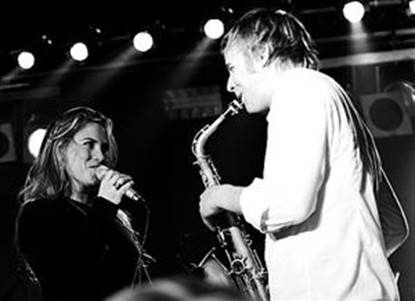
Recently old factory places were resourcefully adapted into clubs.
One of the most famous is "Loftas", where the Parov Stelar
Band (above) is among the many visiting artists.
Despite the clutter of local and international cultural happenings, openings, exhibitions and art workshops, when you think that 24 hours is too short to attend all events, Vilnius still has a nice and rich night life. Not only can you taste the best Japanese, Chinese, Indian and Mexican cuisines but you may enjoy gourmanic kitchens such as Argentinean, Italian, Spanish, Russian, Polynesian, Georgian, Armenian, Thai, German or French.
To try the "cepelinai" or "kugelis" of a Lithuanian national kitchen is a must. Since Lithuanian national dishes are quite heavy, digestive work can be done best by the local beer of big famous breweries or just tasty 'life' beer of the small local beer makers. If you prefer wine and jazz, Vilnius will invite you to lots of cozy wineries, whose numbers have lately grown 'as mushrooms after the rain'.
Not enough adventures? Go and shake your body in a night club! A few years ago, lots of Vilnius dancing clubs caught fire with salsa and bachata. If you more interested in international music, just go to "Pabo Latino" where the best music is played by international and local DJ's, and dance till the sunrise. Various types of life music are always available in "Tamsta Club". Recently old factory places were resourcefully adapted into clubs. One of the most famous is "Loftas". Having nice performances including video-music installations, competitive playing by international and local DJ's and theatrical costume shows – it's always astonishing and crowded.
If you try to compare Vilnius night life with other cities, let’s say to Dubai’s – Vilnius wins with cozy atmosphere, where you can easily meet friends or even find a soulmate (who knows! :) Just come, enjoy and spread the news. We are waiting for you.
Daiva Taliūtė
- Bookmark :
- Digg
- del.icio.us
- Stumbleupon
- Redit it
- Posted by - (0) Comment
The Polish-Lithuanian
War 1919-1920
Part 4 of 4 - The AFTERMATH
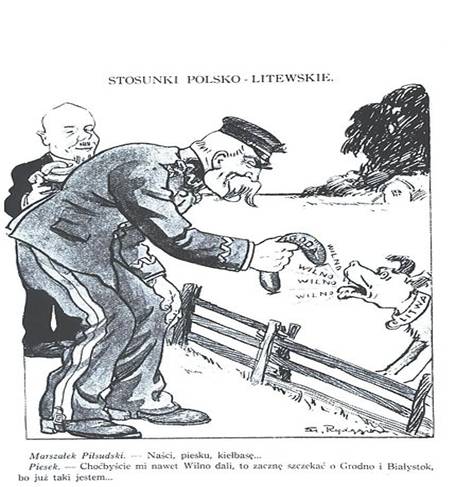
A satirical picture from interwar Polish press (around 1925-1935): a caricature of Marshal Józef Piłsudski and Lithuania, criticizing Lithuanian unwillingness to compromise over Vilnius region. Marshal Piłsudski offers the meat labeled "agreement" to the dog (with the collar labelled Lithuania); the dog barking
"Wilno, wilno, wilno" replies: "Even if you were to give me Wilno, I would
bark for Grodno and Białystok, because this is who I am."
Su pagarbe Vincas Karnila, Associate editor
vin.karnila@VilNews.com
In March 1921, the plans for a referendum vote were abandoned. Neither Lithuania, which was afraid of a negative result, nor Poland, which saw no reason to change status quo, wanted it. The parties could not agree in which territory to carry out the vote and how Żeligowski's forces should be replaced by the League's forces. The League of Nations then moved on from trying to solve the narrow territorial dispute in the Vilnius Region to shaping the fundamental relationship between Poland and Lithuania. During 1921, Belgian Paul Hymans suggested several Polish–Lithuanian federation models but all were rejected by both sides.
READ TODAY’S ARTICLE – PART 4 OF 4
To read previous articles – GO TO OUR SECTION 10
- Bookmark :
- Digg
- del.icio.us
- Stumbleupon
- Redit it
VilNews e-magazine is published in Vilnius, Lithuania. Editor-in-Chief: Mr. Aage Myhre. Inquires to the editors: editor@VilNews.com.
Code of Ethics: See Section 2 – about VilNews. VilNews is not responsible for content on external links/web pages.
HOW TO ADVERTISE IN VILNEWS.
All content is copyrighted © 2011. UAB ‘VilNews’.

 Click on the buttons to open and read each of VilNews' 18 sub-sections
Click on the buttons to open and read each of VilNews' 18 sub-sections 



































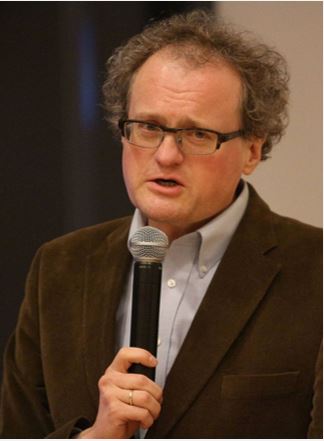
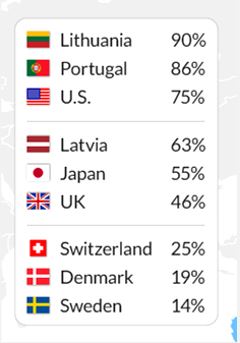
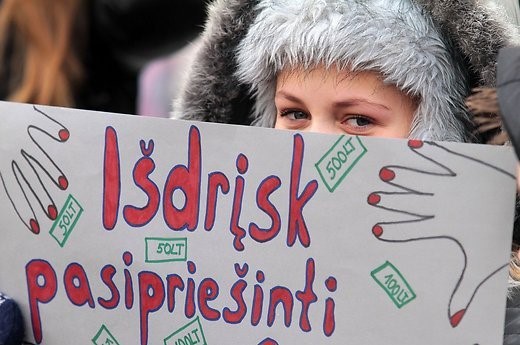


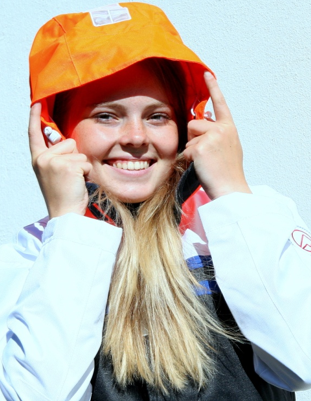
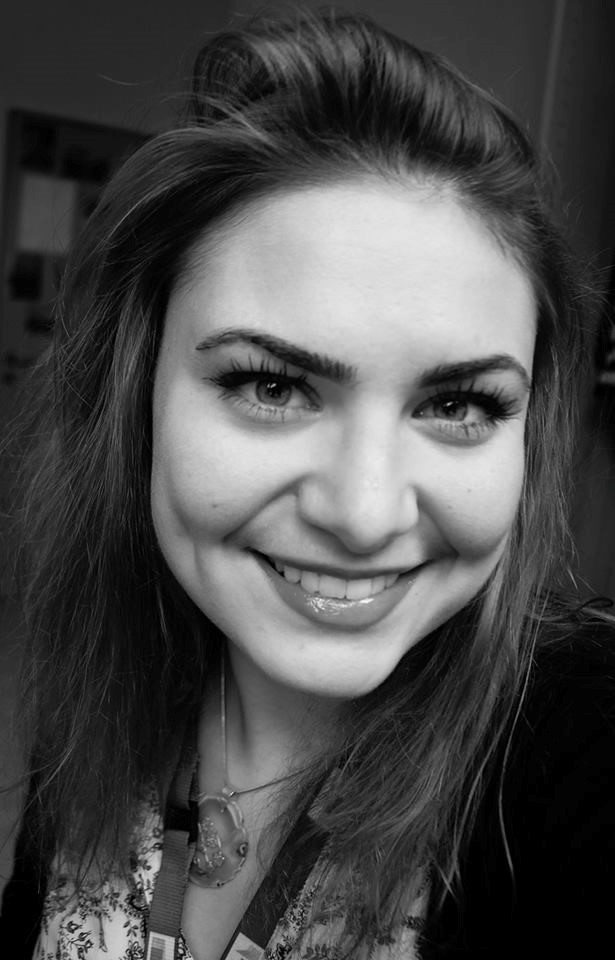
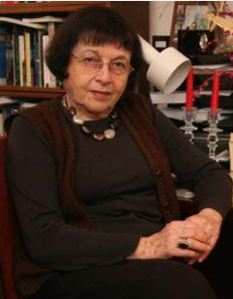
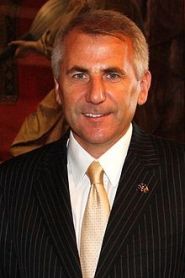
.jpg)
